|
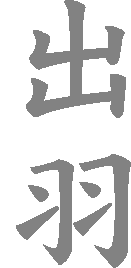
DAIMYO of
DEWA PROVINCE
Mizuno
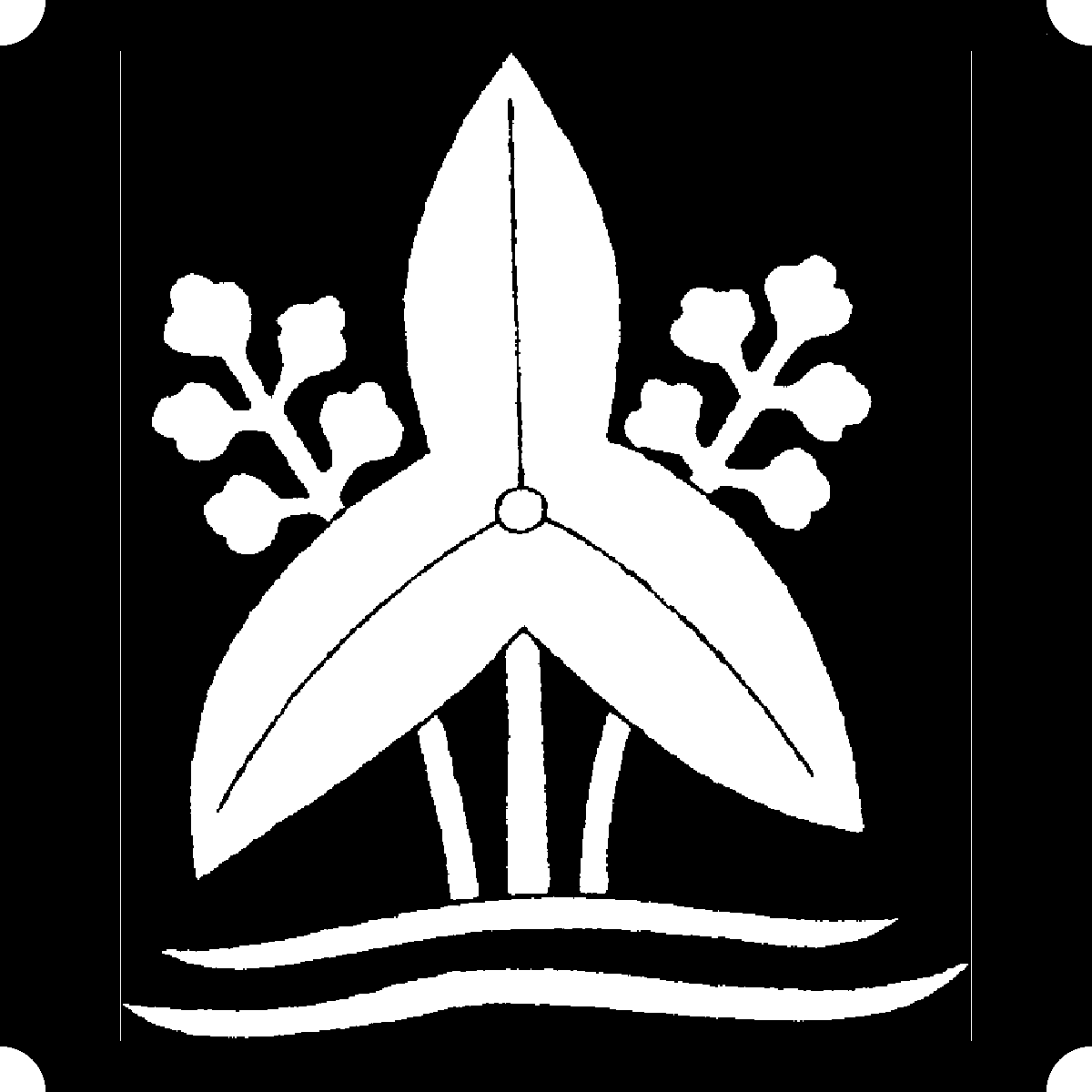

- Domain: Yamagata
- Stipend: 50,000 koku
- Class: Fudai 4
- Headquarters: Yamagata Castle (Flatland)
.jpg)
Daimyo family descended from Minamoto Mitsumasa, son of Tsunemoto (Seiwa-Genji).
In the 15th century, Mitsusada settled at Mizuno (Owari) and took the name of
the place.
Branch that resided successively: in 1615 at Yamakawa (Shimotsuke); in 1635
at Tanaka (Suruga); in 1642 at Yoshida (Mikawa); in 1645 at Okazaki (Mikawa);
in 1762 at Karatsu (Hizen); in 1817 at Hamamatsu (Totomi); in 1845 at
Yamagata.
Succession
- Tadamasa ( -1543)
- Tadamori
- Tadamoto
- Tadayoshi - Daimyo of Tanaka (Suruga -- 45,000 koku); daimyo of Yoshida (Mikawa -- 40,000 koku); 1st Mizuno daimyo of
Okazaki (Mikawa -- 50,000 koku)
- Tadaharu
- Tadamitsu
- Tadayuki
- Tadateru
- Tadatoki
- Tadatou - 7th Mizuno daimyo of Okazaki; 1st Mizuno daimyo of Karatsu
(Hizen -- 60,000 koku)
- Tadakane
- Tadaaki
- Tadakuni - 4th Mizuno daimyo of Karatsu; 1st Mizuno daimyo of Hamamatsu (Totomi
-- 50,000 koku)
- Tadakiyo - 2nd Mizuno daimyo of Hamamatsu; 1st Mizuno daimyo of Yamagata
- Tadahiro
Notable Ancestors
Occupied consecutively the castles of Okawa (Owari), Otaka (Owawi) and
Kariya (Mikawa). His daughter, Odai, married Tokugawa Hirotada and was the
mother of Ieyasu, whence the prosperity of the family.
Related Branches
- Elder branch: Yuki (Shimosa -- 17,000 koku)
- Branch: Numazu (Suruga -- 50,000 koku)
- Branch: Tsurumaki (Kazusa -- 15,000 koku)
- Branch: Shingu (Kii -- 35,000 koku)
Sources
Satake
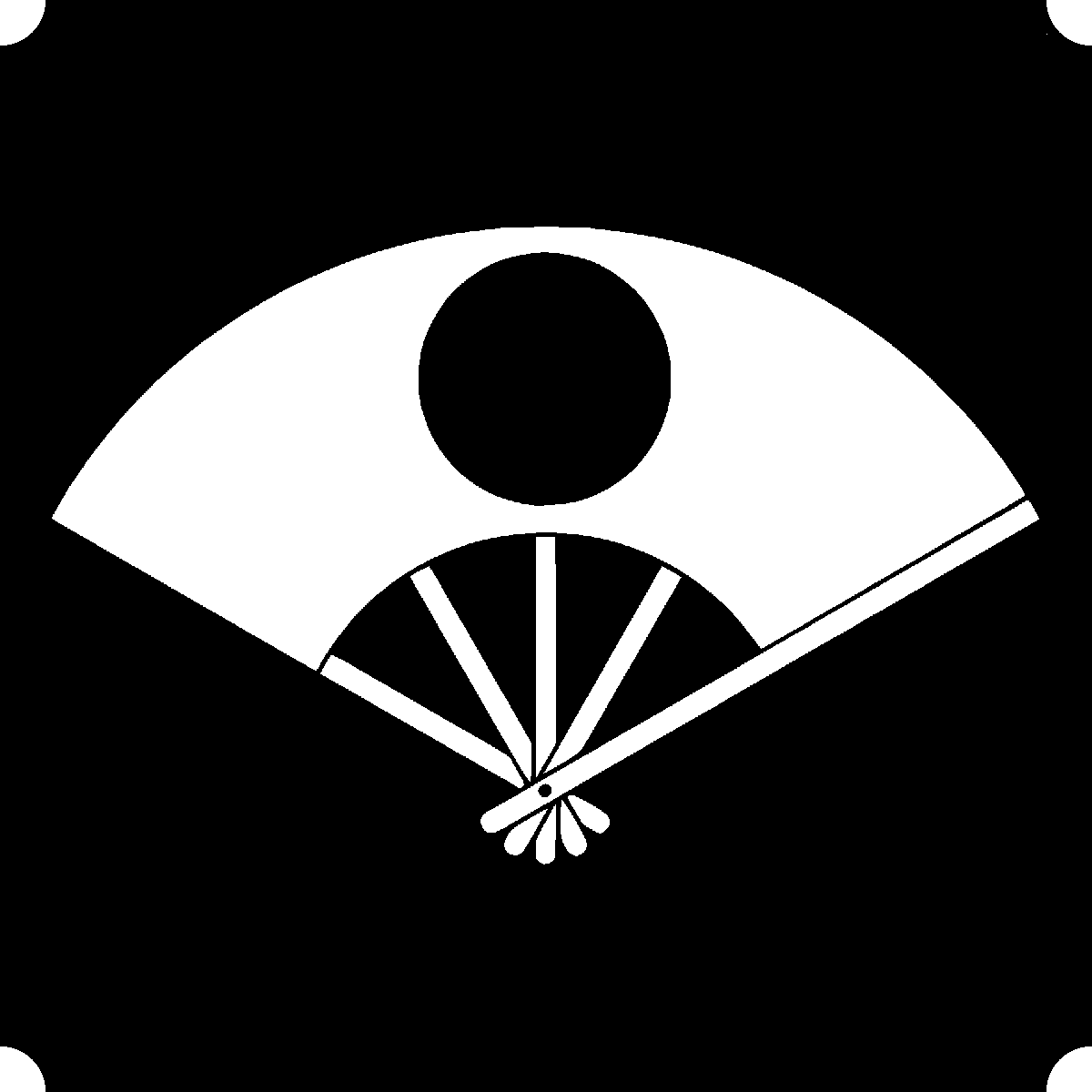

- Domain: Kubota (Akita)
- Stipend: 205,000 koku
- Class: Tozama 4
- Headquarters: Kubota Castle (Hilltop)
%20800x604.jpg)
%20800x533.jpg)
Daimyo family decended from Minamoto Yoshimitsu, brother of Yoshiie (Seiwa-Genji).
Succession
- Minamoto Yoshimitsu
- ...
- Yoshiatsu
- Yoshiaki
- Yoshishige (1547-1612)
- Yoshinobu (1570-1633) - 1st Satake daimyo of Kubota (1602-1633)
- Yoshitaka (1609-1672)
- Yoshizumi (1637-1703)
- Yoshitada (1695-1715)
- Yoshimine (1690-1745)
- Yoshimasa (1728-1753)
- Yoshiharu (1723-1758)
- Yoshiatsu (1748-1785)
- Yoshimasa (1775-1815)
.jpg)
- Yoshihiro (1812-1846)
- Yoshichika (1839-1857)
- Yoshitaka (1825-1884) - Historically, the last daimyo of Kubota
- Yoshinao (1854-1893) - Heir
Notable Ancestors
Son of Yoshimitsu, was the first to take the name of Satake.
-
Satake
Hideyoshi (1151-1228)
Great-grandson of Yoshinari, inherited the domain of Satake (Hitachi). When
Yoritomo raised troops against the Taira, he refused to follow him and
entrenched himself in his castle of Kanasa, where in 1180 he was besieged by Shimokobe
Yukihira: he resisted for a long time and was successful in so far as
to obtain peace whilst keeping his domains.
-
Satake
Yoshinori (1395-1462)
Descendant of Hideyoshi. He supported the Kanryo of Kamakura, Ashikaga
Mochiuji, against the Uesugi (1416). After the death of Mochiuji (1439), the
Kanto appears to have been divided among seven families, at whose head were
the Satake. Yoshinori is known as a great painter and writer as well as a
famous warrior.
In 1569, defeated a coalition of neighboring daimyo; he enlarged his domains
at their expense.
-
Satake
Yoshishige (1547-1612)
Took the field against Ashina Moriuji (1576); but Souma Moritane and
Ishikawa Akimitsu reestablished peace. In 1581, he helped the Sano of
Shimotsuke to defeat Hojo Ujimasa by whom he was attacked. A large number of
petty daimyo now placed themselves under the protection of Yoshishige. They
were the daimyo of Mibu, Kasama, Utsunomiya, Tagaya, etc. Thus Yoshishige soon
was master of the Hitachi, Kazusa, and Shimosa Provinces. In 1585, he made war
against Hojo Ujinao, and then against Date Masamune. Yoshishige stormed the
castles of Ohira, Mito, Ota. In 1590, he established himself in that of Ota, and his
son Yoshinobu in that of Mito.
-
Satake
Yoshinobu (1570-1633)
.jpg)
In 1590, inherited the immense domains of his father. The same year, he took
part in the expedition of Hideyoshi against the Hojo of Odawara and was
confirmed in the government of Hitachi province. Installed at Mito, he
possessed an income of 800,000 koku. In 1600, without an open rupture with
Ieyasu, he lived on good terms with Uesugi Kagekatsu and Ishida Kazushige. It
was due to his father's influence that he was not dispossessed; he was however
transferred to Akita where his descendants remained.
Related Branches
- Branch: Iwasaki (Dewa -- 20,000 koku)
Sources
Satake
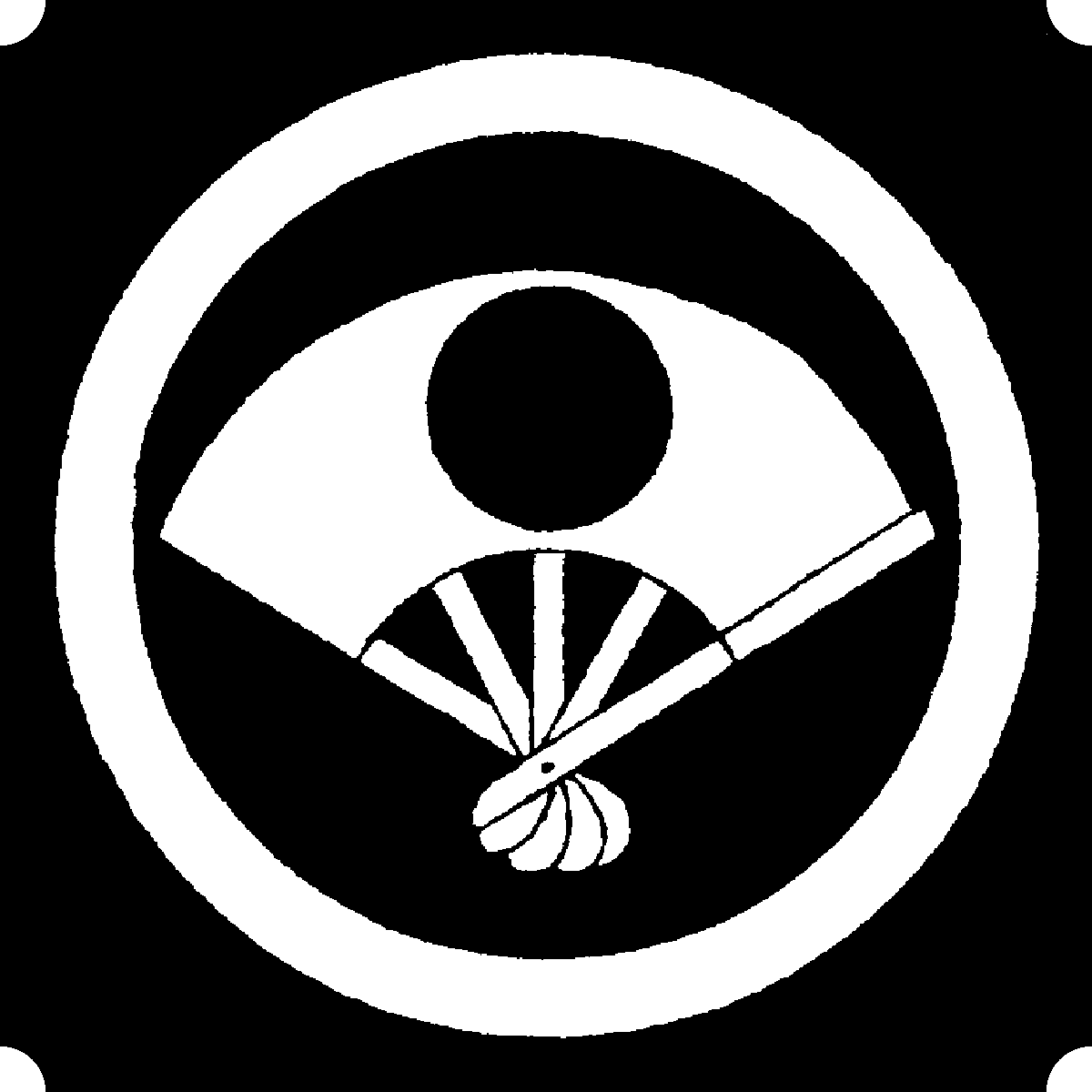

- Domain: Iwasaki
- Stipend: 20,000 koku
- Class: Tozama 5
- Headquarters: Municipal office
Daimyo family decended from Minamoto Yoshimitsu, borther of Yoshiie (Seiwa-Genji).
Branch which settled at the end of the 17th century at Iwasaki.
Succession
- Minamoto Yoshimitsu
- ...
- Yoshiatsu
- Yoshiaki
- Yoshishige (1547-1612)
- Yoshinobu (1570-1633) - 1st Satake daimyo of Kubota (1602-1633)
- Yoshitaka (1609-1672)
- Yoshinaga (1655-1741) - 1st Satake daimyo of Iwasaki
- Yoshimichi (1701-1765)
- Yoshitada (1730-1787)
- Yoshitomo (1759-1793)
- Yoshichika (1787-1821)
- Yoshizumi (1802-1856)
- Yoshizane (1825-1884)
- Yoshitsuma (1837-1870)
- Yoshisato (1858-1914, daimyo 1869- )
Notable Ancestors
Son of Yoshimitsu, was the first to take the name of Satake.
-
Satake
Hideyoshi (1151-1228)
Great-grandson of Yoshinari, inherited the domain of Satake (Hitachi). When
Yoritomo raised troops against the Taira, he refused to follow him and
entrenched himself in his castle of Kanasa, where in 1180 he was besieged by Shimokobe
Yukihira: he resisted for a long time and was successful in so far as
to obtain peace whilst keeping his domains.
-
Satake
Yoshinori (1395-1462)
Descendant of Hideyoshi. He supported the Kanryo of Kamakura, Ashikaga
Mochiuji, against the Uesugi (1416). After the death of Mochiuji (1439), the
Kanto appears to have been divided among seven families, at whose head were
the Satake. Yoshinori is known as a great painter and writer as well as a
famous warrior.
In 1569, defeated a coalition of neighboring daimyo; he enlarged his domains
at their expense.
-
Satake
Yoshishige (1547-1612)
Took the field against Ashina Moriuji (1576); but Souma Moritane and
Ishikawa Akimitsu reestablished peace. In 1581, he helped the Sano of
Shimotsuke to defeat Hojo Ujimasa by whom he was attacked. A large number of
petty daimyo now placed themselves under the protection of Yoshishige. They
were the daimyo of Mibu, Kasama, Utsunomiya, Tagaya, etc. Thus Yoshishige soon
was master of the Hitachi, Kazusa, and Shimosa Provinces. In 1585, he made war
against Hojo Ujinao, and then against Date Masamune. Yoshishige stormed the
castles of Ohira, Mito, Ota. In 1590, he established himself in that of Ota, and his
son Yoshinobu in that of Mito.
-
Satake
Yoshinobu (1570-1633)
.jpg)
In 1590, inherited the immense domains of his father. The same year, he took
part in the expedition of Hideyoshi against the Hojo of Odawara and was
confirmed in the government of Hitachi province. Installed at Mito, he
possessed an income of 800,000 koku. In 1600, without an open rupture with
Ieyasu, he lived on good terms with Uesugi Kagekatsu and Ishida Kazushige. It
was due to his father's influence that he was not dispossessed; he was however
transferred to Akita where his descendants remained.
Related Branches
- Branch: Akita (Dewa -- 205,000 koku)
Sources
Uesugi
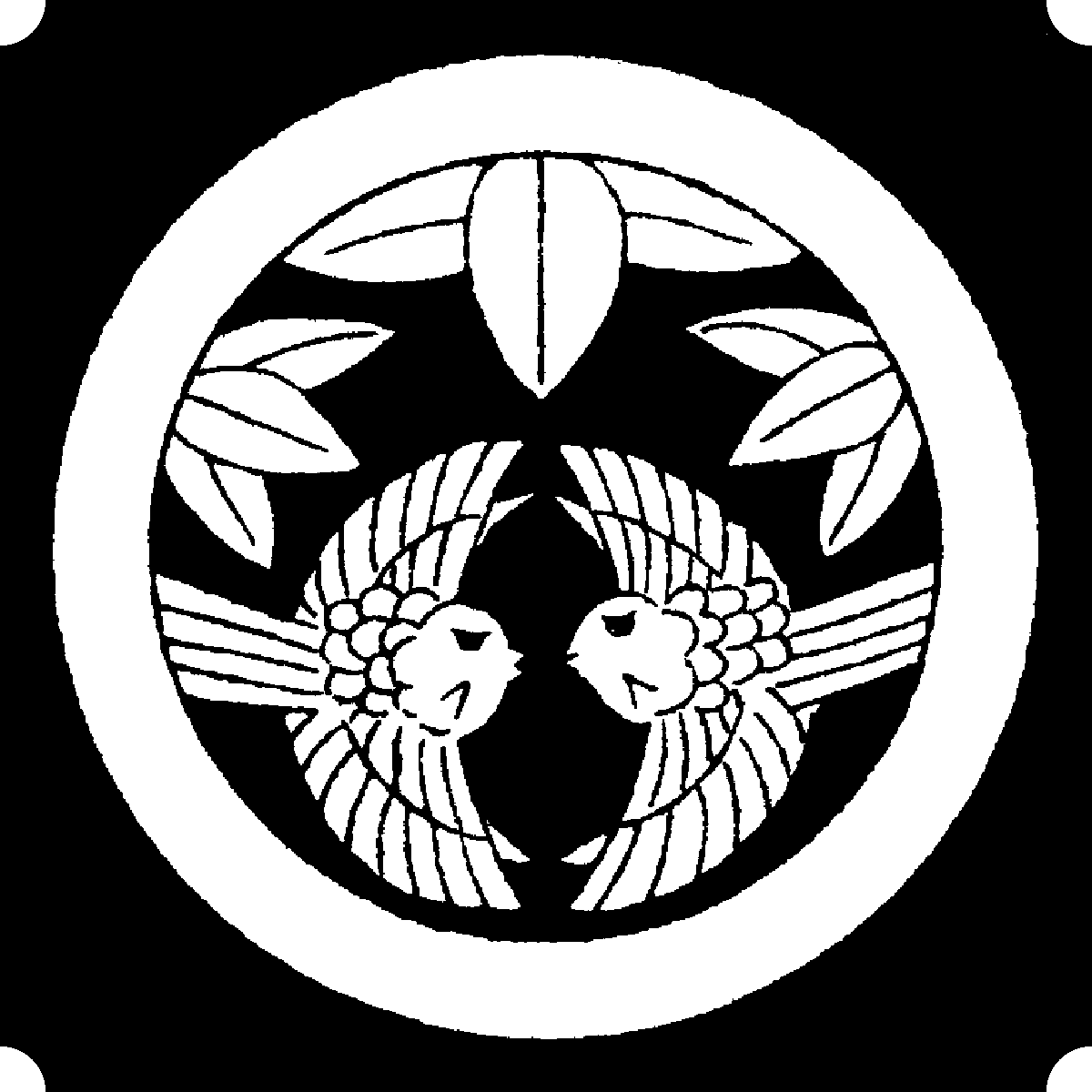

- Domain: Yonezawa
- Stipend: 150,000 koku
- Class: Tozama 4
- Headquarters: Yonezawa Castle (Flatland)
.jpg)
Famous daimyo family descended from Fujiwara Yoshikado
Yamanouchi branch.
Succession
- Fujiwara Kamatari (614-669)
- Fujiwara Fuhito (659-720)
- Fujiwara Fusasaki (628-737)
- Fujiwara Matate (716-767)
- Fujiwara Uchimaro (756-812)
- Fujiwara Fuyutsugu (775-826)
- Fujiwara Yoshikado
- ...
- Shigefusa
- Yorishige
- Norifusa ( -1355)
- Noriaki (1306-1368)
- Norikata (1335-1394)
- Norisada
- Norimoto (1383-1418)
- Norizane (1410-1466)
- Fusaaki (1432-1466)
- Akisada (1454-1510)
- Norifusa (1466-1524)
- Norimasa (1522-1579)
- Terutora (Kenshin) (1530-1578)
- Kagekatsu (1555-1623) - 1st Uesugi daimyo of Yonezawa
- Sadakatsu (1603-1645)
- Tsunakatsu ( -1664)
- Tsunanori
- Yoshinori
- Munenori
- Munefusa
- Shigesada
- Harunori (1751-1822)
- Haruhiro
- Narisada
- Narinori (1820-1889, daimyo 1839-1869)
- Mochinori (1844-1919, daimyo 1869- )
.jpg)
Notable Ancestors
%20800x723.jpg)
Descendant of Yoshikado in the 13th generation. Towards the 13th century,
he received the domain of Uesugi (Tango) and took its name. He had a daughter,
who married Ashikaga Yoriuji, and was the mother of Ietoki, grandfather of
Takauji.
His descendants formed the three branches of Inukake, Yamanouchi, and
Ogigayatsu.
Grandson of Shigefusa, served Ashikaga Takauji, whose complete confidence
he enjoyed. In 1336, he was killed at Shijogahara when Takauji again took possession
of Kyoto.
His sister Kiyoko married Ashikaga Sadauji and was the mother of Takauji
and of Tadayoshi. Norifusa was their uncle, hence he exercised great influence
over them.
-
Uesugi
Noriaki (1306-1368)
Son of Norifusa, served Takauji. In 1337, when Kitabatake Akiie again
became master of Kamakura, Noriaki, who had joined Hosokawa Tomouji, marched
against and defeated him on the Tonegawa. He likewise defeated Nitta Yoshioki.
In 1349, when Ashikaga Motouji became Kanryo of Kamakura, Noriaki was his
Shitsuji together with Ko Morofuyu. At the same time he received the titles of
Echigo no kami and Izu no kami. When his brother Shigeyoshi was murdered by Ko
Moronao (1349), he was exasperated, and with Ashikaga Tadayoshi passed to the
ranks of the Southern party. Defeated in Musashi, he fled to Shinano, where he
enlisted under the banner of prince Munenaga-shinno, a protege of Nitta
Yoshimune, but was again defeated at Fuefukitake. Motouji, however,
lacking the advice of Noriaki, forgave him his defection and again gave him
the title of Shitsuji, which dignity he kept when Ujimitsu succeeded Motoujij
(1367).
-
Uesugi
Yoshinori ( -1378)
Son of Noriaki, was adopted by his uncle Shigeyoshi. In 1349, when the
latter was murdered by Ko Moronao, Yoshinori resolved to take revenge. He with Ashikaga Tadayoshi passed to the Southern side, and with the help of Suwa
Katashige, defeated and killed Morofuyu, brother of Moronao. In 1368, at the death of
Noriaki, he succeeded him as Shitsuji.
Son of Noriaki, was Shitsuji of the Kanryo Ujimitsu. This latter was
ambitious to supplant the Shogun Yoshimitsu and Noriharu vainly sought to
dissuade him from his project. Seeing the futility of his remonstrances, he
went home, wrote a last letter to the Kanryo, and killed himself.
-
Uesugi
Norikata (1335-1394)
In 1378, repressed a revolt of the Toki in Mino. At the death of his brother
Noriharu, he replaced him in the office of Shitsuji to the Kanryo Ujimitsu. He
settled in the village of Yamanouchi, near Kamakura, hence the name given to
the branch of the Uesugi of which he is the ancestor. In 1382, he defeated
Oyama Yoshimasa, who had sided with the Southern dynasty. Sickness forced him
to resign the office of Shitsuji.
-
Uesugi
Norimoto (1383-1418)
Grandson of Norikata. In 1415, he was named Shitsuji when Ujinori was deprived of
this title. The latter rose in revolt the following year, and Norimoto
was defeated. Whilst the Kanryo Mochiuji escaped to Suruga, he sought refuge
in the temple Kokusei-ji at Nirayama (Izu). Pursued even to that place by his
enemies, he went to Echigo. In the beginning of 1417, he levied troops,
re-entered Kamakura, defeated Ujinori's army and again took up his functions.
-
Uesugi
Norizane (1410-1466)
One of the most illustrious men of the Uesugi line was Norizane, son of
Fusakata. In 1419, he was named Shitsuji and Awa no kami, and secured the
succession of Norimoto. Mochiuji, Kanryo of Kamakura, seeing that the Shogun
Yoshimochi had no children, left no means untried to succeed him. In 1428,
when
therefore Yoshinori had been chosen heir to his brother, Mochiuji was
very much irritated and his relations with Norizane became strained for the
latter, having tried to dissuade him from aspiring to so high a dignity, was
now accused of being the cause of his failure. In 1437, Mochiuji formed a plot
against the Shogun, and mistrusting Norizane, sought to arrest him. Norizane
in time fled to one of his castles in Kozuke, and called upon all his vassals
as also upon Yoshinori for help. The latter ordered all the great daimyo of
the East to march against Mochiuji, who in 1439, being besieged in the temple
Eian-ji,
killed himself. Norizane was then made Kanryo, but giving the office
to his brother Kiyokata, he shaved his head and retired to the Kokusei-ji (Izu).
Norizane then travelled over many provinces and died in Nagato.
Norizane, a distinguished man of letters, was the great protector of the
famous Ashikaga school (Shimotsuke) which he reorganized. He likewise favored
artists.
5th son of Fusakata, governor of Echigo and in 1439 was Shitsuji of the Kanryo of
Kamakura. The following year, Yuki Ujitomo brought the two sons of Mochiuji, Haruo and
Yasuo, to his castle of Koga (Shimotsuke) and was their
protector against the Uesugi. Kiyokata besieged them and stormed the castle.
In 1441, Ujitomo was killed during the battle and his wards, then 12- and 10-years-old
respectively, were put to death. Some time after, Kiyokata went to
Kyoto to give an account of the campaign to the Shogun, and as he returned
from the city, he was assassinated.
-
Uesugi
Noritada (1433-1454)
Son of Norizane. In 1445 was named Shitsuji when Nagao Masakata reinstalled
Ashikaga Shigeuji in the office of Kanryo, but, as Noritada was only
12-years-old, Masakata acted in his stead. Shigeuji had resolved to avenge the
death of his father and brothers. He sought a favorable occasion, and one day
he sent Yuki Shigetomo and Satomi Yoshizane to invest the house of Noritada,
who died whilst defending himself.
-
Uesugi
Fusaaki (1432-1466)
Son of Norizane. In 1454 was named Kanto-kanryo by Nagao Masakata after the murder
of his brother Noritada. He forced Shigeuji to seek refuge in Koga and
then took up his residence at Kamakura. In 1461, he then asked the Shogun Yoshimasa to
appoint a successor to Shigeuji. Yoshimasa named his own brother Masatomo, who
had settled at Horikoshi (Izu). Shigeuji, however, supported by the
daimyo of Shimotsuke, took the field, and before the war was over, Fusaaki
fell sick and died in his camp at Ikago (Musashi).
-
Uesugi
Akisada (1454-1510)
Son of Fusasada. He was brought from Echigo by Nagao Masakata to acquire
the inheritance of Fusaaki by marrying his only surviving child. Masakata
declared himself the tutor of his protege, and in 1470 asked the Shogun to give him
the title of Kanryo of Kanto. At the death of Masakata, Akisada
disregarding Kageharu, the son of the former, chose Nagao Tadakage as the
successor. Kageharu now passed to the other branch of the Uesugi, the
Ogigayatsu, and then began the rivalry between these two families which was to
cause the ruin of both. In 1477, Kageharu levied troops and attacked Akisada
at Ikago. Akisada retired to Kozuke, where he built the castle of Shirai, and
from there governed the Kanto. In 1486, the first period of the war finished.
Akisada, victorious over his competitor Sadamasa (Ogigayatsu), ordered Ota
Dokan, the principal kerai of Sadamasa to be put to death. In 1493, the war was resumed; this time, Sadamasa met with death, but his successor, Tomoyoshi,
continued the war. During these continual dissensions, a new power had risen.
In 1493, Hojo Soun had occupied the castle of Odawara, and gradually enlarged
his estates at the expense of his neighbors. In 1505, after having for along time
fought in the environs of Kawagoe (Musashi), the two Uesugi factions were
reconciled and met their common foe. Akisada shaved his head and took
the name of Kajun. The following year, Nagao Tamekage rebelled in Echigo and
put his lord Fusayoshi, brother of Akisada, to death. The latter marched
against the rebel and defeated him. But many of the samurai of Echigo,
breaking their alliance with the Uesugi, enlisted in the army of Tamekage.
Akisada resumed the campaign, but was defeated and killed himself. He had
ruled over the Kanto for 40 years.
-
Uesugi
Norifusa (1466-1524)
Adopted son of Akisada. He strengthened his castle of Hirai (Kozuke), and
soon after had to oppose the Nagao, Tamekage and Kageharu, and Hojo Soun.
Nagao Kagenaga came to his rescue, and in 1512 had him made Kanryo of Kamakura.
In 1524, Uesugi Tomooki (Ogigayatsu) was defeated at Kawagoe by Hojo Ujitsuna,
who occupied the castle of Edo. Norifusa was preparing an expedition against
Ujitsuna when he fell sick and died.
-
Uesugi
Norimasa (1522-1579)
Son of Norifusa. He continued the war against the Hojo of Odawara. In 1537,
he united his forces with those of Ogigayatsu Tomosada, but Hojo Ujiyasu was
victorious in the battle and occupied the castle of Kawagoe: Tomosada was
killed and Norimasa fled to Hirai. He formed a second army and re-entered the
field and was again defeated in 1540 and 1543. The whole Kanto now
acknowledged the authority of the Hojo. Norimasa then possessed only the
castle of Hirai, and in 1551, Ujiyasu occupied it. Norimasa fled to Echigo and
placed himself under the protection of his vassal Nagao Kagetora, whom he
adopted as his son and who afterwards took the name of Uesugi. He was to be
the famous Kenshin, and to support the glory of the family.
-
Uesugi
Terutora (Kenshin) (1530-1578)
.jpg)
%20386x800.jpg)
.jpg)
3rd son of Nagao Tamekage, vassal of the Uesugi. Born at Tochio (Echigo),
he received the name of Sarumatsu-maru, then that of Kagetora. At the death of
his father, his elder brother, Harukage, succeeded him, but being feeble and
sickly, he showed little ability to govern. Kagetora, then 11-years-old,
suffered to such an extent from this state of affairs, that he asked
permission to become a bonze and took the name of Shushimbo. He travelled over
several provinces and at the Hiei-zan he met Usami Sadayuki, who advised him
to return to his native province. He followed this advice, and in 1543 he
returned to Echigo, deposed his brother, and supported by Sadayuki, assumed
the administration of the paternal domains. He began his career by forcing his
brother-in-law, Nagao Masakage, to sue for peace and submit to him. At that
time, Murakami Yoshikiyo was at war with Takeda Shingen. Defeated, he called
on Kagetora for help, and thus began a struggle between these two fearless
opponents which was to endure for more then ten years. In 1551, Uesugi
Norimasa, defeated by Hojo Ujiyasu, sought protection and refuge at his
powerful vassal's castle, but that latter made his conditions. Norimasa was to
invest him with the office of Kanryo, adopt him as his son, give him the name
of Uesugi, and the title of Echigo no kami. The following year, Kagetora
shaved his head and took the name of Kenshin, by which he is better known. He
then went to Kyoto and was ordered by the Shogun to fight the Hojo. He thus
had to combat Takeda Shingen and the daimyo of Odawara at the same time. The
war with Shingen was mostly fought in the Kawanaka-jima district, north of
Shinano. Here the two champions met every year and displayed their strategic
skill, each campaign ending without decisive results. In 1558, Kenshin
declared war against the Hojo, and stormed the castles of Numata and of
Umayabashi (Kozuke). The Shogun Yoshiteru then gave him the title of Kanto-kanryo, and
allowed him to use one of the characters of his own name, and the name
Kagetora became Terutora. Pursuing his exploits, he besieged Odawara, fought
Takeda Shigen at Kawanaka-jima, where Nobushige, Shingen's brother, was
killed; conquered Etchu and achieved the conquest of Kozuke province (1564).
At this stage of the war, the Shogun offered to arbitrate, and forced him to
make peace with the Hojo, one of the clauses of the treaty being that Kenshin,
who was a bonze since childhood and had no heir, should adopt Ujiyasu's son,
Saburo, to whom he was to give the name of Kagetora. When peace was signed,
Kenshin was able to give his undivided attention to Shingen who had just
invaded Etchu, and whom he pursued as far as Kaga and Noto. Whilst thus waging
war far from his own estates, he heard that Nobunaga was besieging several of
his castles in Kanto. He hastened to face this new foe and hesitated not to
enter into contest with him who had become master of all Japan. He joined the
coalition against Nobunaga formed by Takeda Katsuyori, son of Shingen. Before
personally entering upon a campaign against this dreaded foe, Nobunaga sent
Shibata Katsuie, Maeda Toshiie, etc. against him. After some months, Kenshin
fell sick and died at the age of 48. He received the Buddhist posthumous name
of Shinko. The question of his succession brought about fresh troubles.
-
Uesugi
Kagetora (1552-1579)
7th son of Hojo Ujiyasu, adopted by Kenshin. In 1564, he governed Noto and
Sado. At the death of Kenshin, he received a part of his inheritance, but
Kagekatsu, Kenshin's nephew, claimed his rights. War followed and Kagetora was
defeated. Hojo Nagakuni was sent to help him, but Takeda Katsuyori supported
Kagekatsu. War was renewed and after a short space, Nagakuni was killed in
battle, and Kagetora was again defeated and killed himself at Kitagawa.
-
Uesugi
Kagekatsu (1555-1623)
.jpg)
Son of Nagao Masakage, who married a sister of Kenshin. He was first called
Kiheida and was brought up by his uncle, whom he accompanied in all his
campaigns as soon as he could carry arms. When Kenshin had adopted Kagetora,
he divided his immense domains in half to satisfy both his sons. But at the
death of Kenshin, Kagekatsu claimed the whole inheritance, and the following
year, Kagetora being defeated, killed himself. Being sole master, Kagekatsu
restored order in his provinces, reconquered Etchu and Kaga, served Nobunaga
and then Hideyoshi, who bestowed upon him the title of Chunagon and chose him
as one of the five Tairo who were entrusted with the government of affairs
during the minority of Hideyoshi. In the beginning of 1598, Kagetora exchanged
his fief of Echigo for that of Aizu with a revenue of 1,200,000 koku. Some
months laters, Hideyoshi died and disunion quickly followed among the Tairo,
all of whom returned to their domains. Ieyasu soon after hearing that
Kagekatsu was preparing for war, and not wishing to give him time to finish
his preparations, at once took the field against him. He had scarcely reached
Oyama (Shimotsuke), when he learned of the coalition that had been formed
against him by Ishida Kazushige, and he hastened to retrace his steps. Naoe
Kanetsugu, who was leading the Aizu troops, intended to attack him at the
juncture but Kagekatsu opposed his plan. After Sekigahara (1600), when the
daimyo were vying with each other in their submission to the victor, Kagekatsu
kept aloof. Ieyasu at last called him to Kyoto and there exchanged his fief of
Aizu for that of Yonezawa (Dewa -- 300,000 koku). In 1615, Kagekatsu took his
place among the daimyo who were besieging Osaka, his submission being
complete.
-
Uesugi
Sadakatsu (1603-1645)
Son of Kagekatsu, succeeded him in the fief of Yonezawa, and proved himself
a good administrator.
-
Uesugi
Tsunakatsu (
-1664)
Son of Sadakatsu, had no children, and adopted Tsunanori, son of Kira
Yoshinaka; but at his death, the revenues of the fief were reduced to 150,000
koku.
-
Uesugi
Harunori (1751-1822)
.jpg)
Son of Akizuki Tanemitsu, was adopted by Uesugi Shigesada and succeeded him
in the fief of Yonezawa. In 1785, he entrusted the administration of domains
to his son and devoted his time to literature. In 1797, he established a school at
Yonezawa called Kojo-kan.
The descendants of the family resided at Yonezawa (Dewa).
Related Branches
- Side branch: Yonezawa Shinden (Dewa -- 10,000 koku)
Sources
Uesugi


- Domain: Yonezawa Shinden
- Stipend: 10,000 koku
- Class: Tozama 5
- Headquarters: Municipal office
Famous daimyo family descended from Fujiwara Yoshikado
Side branch descended from Tsunanori.
Succession
- Fujiwara Kamatari (614-669)
- Fujiwara Fuhito (659-720)
- Fujiwara Fusasaki (628-737)
- Fujiwara Matate (716-767)
- Fujiwara Uchimaro (756-812)
- Fujiwara Fuyutsugu (775-826)
- Fujiwara Yoshikado
- ...
- Shigefusa
- Yorishige
- Norifusa ( -1355)
- Noriaki (1306-1368)
- Norikata (1335-1394)
- Norisada
- Norimoto (1383-1418)
- Norizane (1410-1466)
- Fusaaki (1432-1466)
- Akisada (1454-1510)
- Norifusa (1466-1524)
- Norimasa (1522-1579)
- Terutora (Kenshin) (1530-1578)
- Kagekatsu (1555-1623) - 1st Uesugi daimyo of Yonezawa
- Sadakatsu (1603-1645)
- Tsunakatsu ( -1664)
- Tsunanori
- Katsuchika - 1st Uesugi diamyo of Yonezawa Shinden
- Katsuyoshi
- Katsusada
- Katsuyoshi
- Katsumichi
Notable Ancestors
%20800x723.jpg)
Descendant of Yoshikado in the 13th generation. Towards the 13th century,
he received the domain of Uesugi (Tango) and took its name. He had a daughter,
who married Ashikaga Yoriuji, and was the mother of Ietoki, grandfather of
Takauji.
His descendants formed the three branches of Inukake, Yamanouchi, and
Ogigayatsu.
Grandson of Shigefusa, served Ashikaga Takauji, whose complete confidence
he enjoyed. In 1336, he was killed at Shijogahara when Takauji again took possession
of Kyoto.
His sister Kiyoko married Ashikaga Sadauji and was the mother of Takauji
and of Tadayoshi. Norifusa was their uncle, hence he exercised great influence
over them.
-
Uesugi
Noriaki (1306-1368)
Son of Norifusa, served Takauji. In 1337, when Kitabatake Akiie again
became master of Kamakura, Noriaki, who had joined Hosokawa Tomouji, marched
against and defeated him on the Tonegawa. He likewise defeated Nitta Yoshioki.
In 1349, when Ashikaga Motouji became Kanryo of Kamakura, Noriaki was his
Shitsuji together with Ko Morofuyu. At the same time he received the titles of
Echigo no kami and Izu no kami. When his brother Shigeyoshi was murdered by Ko
Moronao (1349), he was exasperated, and with Ashikaga Tadayoshi passed to the
ranks of the Southern party. Defeated in Musashi, he fled to Shinano, where he
enlisted under the banner of prince Munenaga-shinno, a protege of Nitta
Yoshimune, but was again defeated at Fuefukitake. Motouji, however,
lacking the advice of Noriaki, forgave him his defection and again gave him
the title of Shitsuji, which dignity he kept when Ujimitsu succeeded Motoujij
(1367).
-
Uesugi
Yoshinori ( -1378)
Son of Noriaki, was adopted by his uncle Shigeyoshi. In 1349, when the
latter was murdered by Ko Moronao, Yoshinori resolved to take revenge. He with Ashikaga Tadayoshi passed to the Southern side, and with the help of Suwa
Katashige, defeated and killed Morofuyu, brother of Moronao. In 1368, at the death of
Noriaki, he succeeded him as Shitsuji.
Son of Noriaki, was Shitsuji of the Kanryo Ujimitsu. This latter was
ambitious to supplant the Shogun Yoshimitsu and Noriharu vainly sought to
dissuade him from his project. Seeing the futility of his remonstrances, he
went home, wrote a last letter to the Kanryo, and killed himself.
-
Uesugi
Norikata (1335-1394)
In 1378, repressed a revolt of the Toki in Mino. At the death of his brother
Noriharu, he replaced him in the office of Shitsuji to the Kanryo Ujimitsu. He
settled in the village of Yamanouchi, near Kamakura, hence the name given to
the branch of the Uesugi of which he is the ancestor. In 1382, he defeated
Oyama Yoshimasa, who had sided with the Southern dynasty. Sickness forced him
to resign the office of Shitsuji.
-
Uesugi
Norimoto (1383-1418)
Grandson of Norikata. In 1415, he was named Shitsuji when Ujinori was deprived of
this title. The latter rose in revolt the following year, and Norimoto
was defeated. Whilst the Kanryo Mochiuji escaped to Suruga, he sought refuge
in the temple Kokusei-ji at Nirayama (Izu). Pursued even to that place by his
enemies, he went to Echigo. In the beginning of 1417, he levied troops,
re-entered Kamakura, defeated Ujinori's army and again took up his functions.
-
Uesugi
Norizane (1410-1466)
One of the most illustrious men of the Uesugi line was Norizane, son of
Fusakata. In 1419, he was named Shitsuji and Awa no kami, and secured the
succession of Norimoto. Mochiuji, Kanryo of Kamakura, seeing that the Shogun
Yoshimochi had no children, left no means untried to succeed him. In 1428,
when
therefore Yoshinori had been chosen heir to his brother, Mochiuji was
very much irritated and his relations with Norizane became strained for the
latter, having tried to dissuade him from aspiring to so high a dignity, was
now accused of being the cause of his failure. In 1437, Mochiuji formed a plot
against the Shogun, and mistrusting Norizane, sought to arrest him. Norizane
in time fled to one of his castles in Kozuke, and called upon all his vassals
as also upon Yoshinori for help. The latter ordered all the great daimyo of
the East to march against Mochiuji, who in 1439, being besieged in the temple
Eian-ji,
killed himself. Norizane was then made Kanryo, but giving the office
to his brother Kiyokata, he shaved his head and retired to the Kokusei-ji (Izu).
Norizane then travelled over many provinces and died in Nagato.
Norizane, a distinguished man of letters, was the great protector of the
famous Ashikaga school (Shimotsuke) which he reorganized. He likewise favored
artists.
5th son of Fusakata, governor of Echigo and in 1439 was Shitsuji of the Kanryo of
Kamakura. The following year, Yuki Ujitomo brought the two sons of Mochiuji, Haruo and
Yasuo, to his castle of Koga (Shimotsuke) and was their
protector against the Uesugi. Kiyokata besieged them and stormed the castle.
In 1441,
Ujitomo was killed during the battle and his wards, then 12- and 10-years-old
respectively, were put to death. Some time after, Kiyokata went to
Kyoto to give an account of the campaign to the Shogun, and as he returned
from the city, he was assassinated.
-
Uesugi
Noritada (1433-1454)
Son of Norizane. In 1445 was named Shitsuji when Nagao Masakata reinstalled
Ashikaga Shigeuji in the office of Kanryo, but, as Noritada was only
12-years-old, Masakata acted in his stead. Shigeuji had resolved to avenge the
death of his father and brothers. He sought a favorable occasion, and one day
he sent Yuki Shigetomo and Satomi Yoshizane to invest the house of Noritada,
who died whilst defending himself.
-
Uesugi
Fusaaki (1432-1466)
Son of Norizane. In 1454 was named Kanto-kanryo by Nagao Masakata after the murder
of his brother Noritada. He forced Shigeuji to seek refuge in Koga and
then took up his residence at Kamakura. In 1461, he then asked the Shogun Yoshimasa to
appoint a successor to Shigeuji. Yoshimasa named his own brother Masatomo, who
had settled at Horikoshi (Izu). Shigeuji, however, supported by the
daimyo of Shimotsuke, took the field, and before the war was over, Fusaaki
fell sick and died in his camp at Ikago (Musashi).
-
Uesugi
Akisada (1454-1510)
Son of Fusasada. He was brought from Echigo by Nagao Masakata to acquire
the inheritance of Fusaaki by marrying his only surviving child. Masakata
declared himself the tutor of his protege, and in 1470 asked the Shogun to give him
the title of Kanryo of Kanto. At the death of Masakata, Akisada
disregarding Kageharu, the son of the former, chose Nagao Tadakage as the
successor. Kageharu now passed to the other branch of the Uesugi, the
Ogigayatsu, and then began the rivalry between these two families which was to
cause the ruin of both. In 1477, Kageharu levied troops and attacked Akisada
at Ikago. Akisada retired to Kozuke, where he built the castle of Shirai, and
from there governed the Kanto. In 1486, the first period of the war finished.
Akisada, victorious over his competitor Sadamasa (Ogigayatsu), ordered Ota
Dokan, the principal kerai of Sadamasa to be put to death. In 1493, the war was resumed; this time, Sadamasa met with death, but his successor, Tomoyoshi,
continued the war. During these continual dissensions, a new power had risen.
In 1493,
Hojo Soun had occupied the castle of Odawara, and gradually enlarged
his estates at the expense of his neighbors. In 1505, after having for along time
fought in the environs of Kawagoe (Musashi), the two Uesugi factions were
reconciled and met their common foe. Akisada shaved his head and took
the name of Kajun. The following year, Nagao Tamekage rebelled in Echigo and
put his lord Fusayoshi, brother of Akisada, to death. The latter marched
against the rebel and defeated him. But many of the samurai of Echigo,
breaking their alliance with the Uesugi, enlisted in the army of Tamekage.
Akisada resumed the campaign, but was defeated and killed himself. He had
ruled over the Kanto for 40 years.
-
Uesugi
Norifusa (1466-1524)
Adopted son of Akisada. He strengthened his castle of Hirai (Kozuke), and
soon after had to oppose the Nagao, Tamekage and Kageharu, and Hojo Soun.
Nagao Kagenaga came to his rescue, and in 1512 had him made Kanryo of Kamakura.
In 1524, Uesugi Tomooki (Ogigayatsu) was defeated at Kawagoe by Hojo Ujitsuna,
who occupied the castle of Edo. Norifusa was preparing an expedition against
Ujitsuna when he fell sick and died.
-
Uesugi
Norimasa (1522-1579)
Son of Norifusa. He continued the war against the Hojo of Odawara. In 1537,
he united his forces with those of Ogigayatsu Tomosada, but Hojo Ujiyasu was
victorious in the battle and occupied the castle of Kawagoe: Tomosada was
killed and Norimasa fled to Hirai. He formed a second army and re-entered the
field and was again defeated in 1540 and 1543. The whole Kanto now
acknowledged the authority of the Hojo. Norimasa then possessed only the
castle of Hirai, and in 1551, Ujiyasu occupied it. Norimasa fled to Echigo and
placed himself under the protection of his vassal Nagao Kagetora, whom he
adopted as his son and who afterwards took the name of Uesugi. He was to be
the famous Kenshin, and to support the glory of the family.
-
Uesugi
Terutora (Kenshin) (1530-1578)
.jpg)
%20386x800.jpg)
.jpg)
3rd son of Nagao Tamekage, vassal of the Uesugi. Born at Tochio (Echigo),
he received the name of Sarumatsu-maru, then that of Kagetora. At the death of
his father, his elder brother, Harukage, succeeded him, but being feeble and
sickly, he showed little ability to govern. Kagetora, then 11-years-old,
suffered to such an extent from this state of affairs, that he asked
permission to become a bonze and took the name of Shushimbo. He travelled over
several provinces and at the Hiei-zan he met Usami Sadayuki, who advised him
to return to his native province. He followed this advice, and in 1543 he
returned to Echigo, deposed his brother, and supported by Sadayuki, assumed
the administration of the paternal domains. He began his career by forcing his
brother-in-law, Nagao Masakage, to sue for peace and submit to him. At that
time, Murakami Yoshikiyo was at war with Takeda Shingen. Defeated, he called
on Kagetora for help, and thus began a struggle between these two fearless
opponents which was to endure for more then ten years. In 1551, Uesugi
Norimasa, defeated by Hojo Ujiyasu, sought protection and refuge at his
powerful vassal's castle, but that latter made his conditions. Norimasa was to
invest him with the office of Kanryo, adopt him as his son, give him the name
of Uesugi, and the title of Echigo no kami. The following year, Kagetora
shaved his head and took the name of Kenshin, by which he is better known. He
then went to Kyoto and was ordered by the Shogun to fight the Hojo. He thus
had to combat Takeda Shingen and the daimyo of Odawara at the same time. The
war with Shingen was mostly fought in the Kawanaka-jima district, north of
Shinano. Here the two champions met every year and displayed their strategic
skill, each campaign ending without decisive results. In 1558, Kenshin
declared war against the Hojo, and stormed the castles of Numata and of
Umayabashi (Kozuke). The Shogun Yoshiteru then gave him the title of Kanto-kanryo, and
allowed him to use one of the characters of his own name, and the name
Kagetora became Terutora. Pursuing his exploits, he besieged Odawara, fought
Takeda Shigen at Kawanaka-jima, where Nobushige, Shingen's brother, was
killed; conquered Etchu and achieved the conquest of Kozuke province (1564).
At this stage of the war, the Shogun offered to arbitrate, and forced him to
make peace with the Hojo, one of the clauses of the treaty being that Kenshin,
who was a bonze since childhood and had no heir, should adopt Ujiyasu's son,
Saburo, to whom he was to give the name of Kagetora. When peace was signed,
Kenshin was able to give his undivided attention to Shingen who had just
invaded Etchu, and whom he pursued as far as Kaga and Noto. Whilst thus waging
war far from his own estates, he heard that Nobunaga was besieging several of
his castles in Kanto. He hastened to face this new foe and hesitated not to
enter into contest with him who had become master of all Japan. He joined the
coalition against Nobunaga formed by Takeda Katsuyori, son of Shingen. Before
personally entering upon a campaign against this dreaded foe, Nobunaga sent
Shibata Katsuie, Maeda Toshiie, etc. against him. After some months, Kenshin
fell sick and died at the age of 48. He received the Buddhist posthumous name
of Shinko. The question of his succession brought about fresh troubles.
-
Uesugi
Kagetora (1552-1579)
7th son of Hojo Ujiyasu, adopted by Kenshin. In 1564, he governed Noto and
Sado. At the death of Kenshin, he received a part of his inheritance, but
Kagekatsu, Kenshin's nephew, claimed his rights. War followed and Kagetora was
defeated. Hojo Nagakuni was sent to help him, but Takeda Katsuyori supported
Kagekatsu. War was renewed and after a short space, Nagakuni was killed in
battle, and Kagetora was again defeated and killed himself at Kitagawa.
-
Uesugi
Kagekatsu (1555-1623)
.jpg)
Son of Nagao Masakage, who married a sister of Kenshin. He was first called
Kiheida and was brought up by his uncle, whom he accompanied in all his
campaigns as soon as he could carry arms. When Kenshin had adopted Kagetora,
he divided his immense domains in half to satisfy both his sons. But at the
death of Kenshin, Kagekatsu claimed the whole inheritance, and the following
year, Kagetora being defeated, killed himself. Being sole master, Kagekatsu
restored order in his provinces, reconquered Etchu and Kaga, served Nobunaga
and then Hideyoshi, who bestowed upon him the title of Chunagon and chose him
as one of the five Tairo who were entrusted with the government of affairs
during the minority of Hideyoshi. In the beginning of 1598, Kagetora exchanged
his fief of Echigo for that of Aizu with a revenue of 1,200,000 koku. Some
months laters, Hideyoshi died and disunion quickly followed among the Tairo,
all of whom returned to their domains. Ieyasu soon after hearing that
Kagekatsu was preparing for war, and not wishing to give him time to finish
his preparations, at once took the field against him. He had scarcely reached
Oyama (Shimotsuke), when he learned of the coalition that had been formed
against him by Ishida Kazushige, and he hastened to retrace his steps. Naoe
Kanetsugu, who was leading the Aizu troops, intended to attack him at the
juncture but Kagekatsu opposed his plan. After Sekigahara (1600), when the
daimyo were vying with each other in their submission to the victor, Kagekatsu
kept aloof. Ieyasu at last called him to Kyoto and there exchanged his fief of
Aizu for that of Yonezawa (Dewa -- 300,000 koku). In 1615, Kagekatsu took his
place among the daimyo who were besieging Osaka, his submission being
complete.
-
Uesugi
Sadakatsu (1603-1645)
Son of Kagekatsu, succeeded him in the fief of Yonezawa, and proved himself
a good administrator.
-
Uesugi
Tsunakatsu (
-1664)
Son of Sadakatsu, had no children, and adopted Tsunanori, son of Kira
Yoshinaka; but at his death, the revenues of the fief were reduced to 150,000
koku.
-
Uesugi
Harunori (1751-1822)
.jpg)
Son of Akizuki Tanemitsu, was adopted by Uesugi Shigesada and succeeded him
in the fief of Yonezawa. In 1785, he entrusted the administration of domains
to his son and devoted his time to literature. In 1797, he established a school at
Yonezawa called Kojo-kan.
The descendants of the family resided at Yonezawa (Dewa).
Related Branches
- Main branch: Yonezawa (Dewa -- 150,000 koku)
Sources
Matsudaira (Fujii)
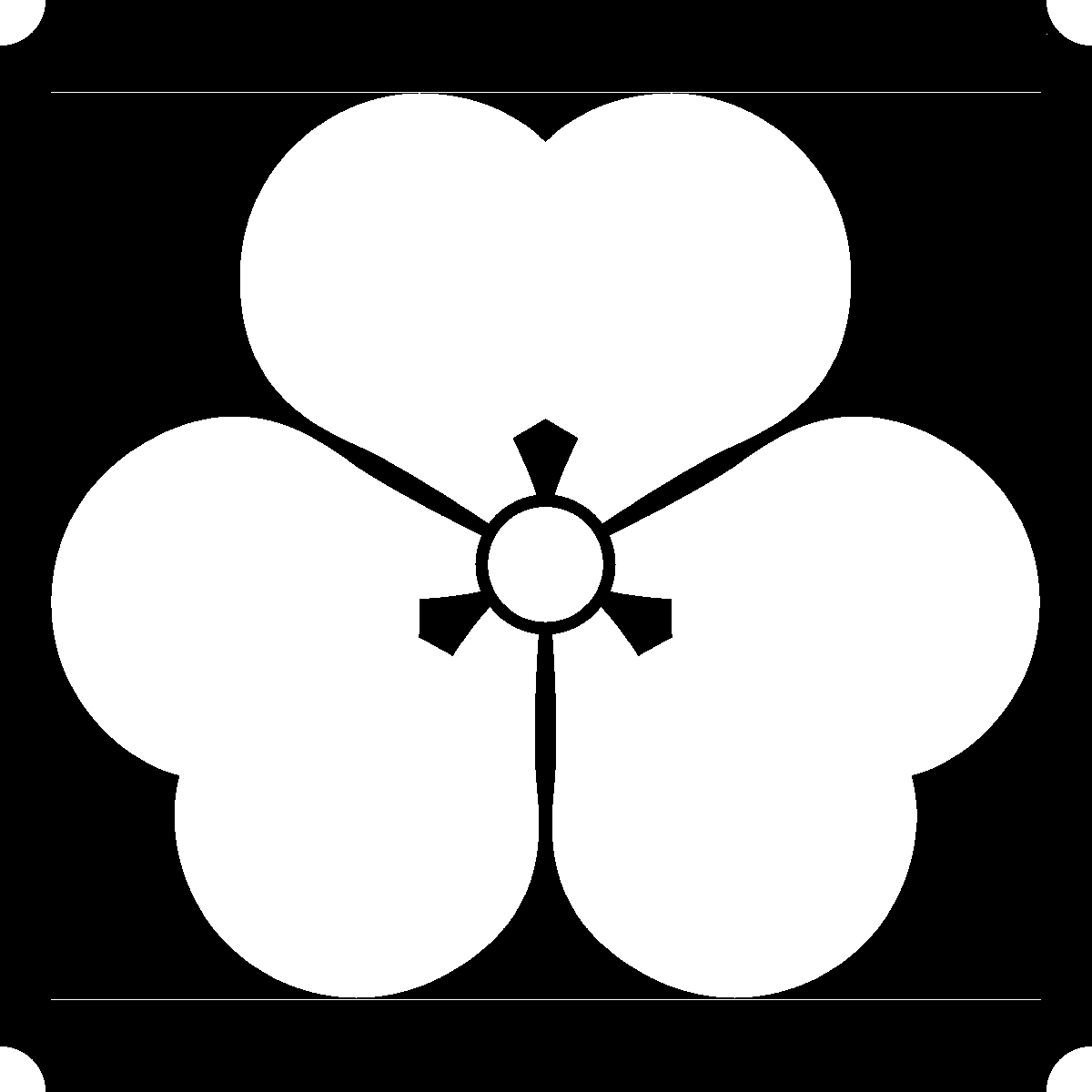

- Domain: Kaminoyama
- Stipend: 30,000 koku
- Class: Fudai 5
- Headquarters: Kaminoyama Castle (aka Tsukioka Castle) (Hilltop)
%20639x800.jpg) � Yamagata Prefecture / � JNTO
� Yamagata Prefecture / � JNTO
Family issued from Toshinaga ( -1560), which residing at Fujii (Mikawa),
took the name of that place.
Senior branch, descended from Tadakuni. From Sasayama (Tanba), it was
transferred: in 1649 to Akashi (Harima -- 70,000 koku); in 1679 to Koriyama
(Yamato); in 1685 to Koga (Shimosa). In 1693, Tadayuki, having become insane,
was deposed, and his son Nobumichi was sent to Niwase (Bitchu); and then in 1697 to
Kaminoyama, where his descendants remained.
Succession
- Toshinaga
- Nobukazu (1548-1632) - Daimyo of Tsuchiura (Hitachi --
35,000 koku)
- Nobuyoshi (1576-1621) - Daimyo of Takasaki (Kozuke --
50,000 koku); 1st Matsudaira daimyo of Sasayama (Tanba -- 50,000 koku)
- Tadakuni (1597-1659) - 2nd Matsudaira daimyo of Sasayama; 1st Matsudaira
daimyo of Akashi (Harima -- 70,000 koku)
- Nobuyuki - 2nd Matsudaira daimyo of Akashi; daimyo of
Koriyama (Yamato -- 120,000 koku); 1st Matsudaira daimyo of Koga (Shimosa --
90,000 koku)
- Tadayuki
- Nobumichi - Daimyo of Niwase (Bitchu -- 30,000 koku); 1st
Matsudaira daimyo of Kaminoyama
- Nagatsune
- Nobumasa
- Nobutsura
- Nobufuru
- Nobuzane
- Nobuyuki
- Nobumichi
- Nobutsune (1844-1918)
- Nobuyasu
Notable Ancestors
-
Matsudaira
Nobukazu (1548-1632)
Accompanied Ieyasu into Kanto, settled at Nunokawa (Shimosa); then in 1601
was transferred to Tsuchiura (Hitachi -- 30,000 koku); in 1617 to Takasaki (Kozuke
-- 50,000 koku); and in 1619 to Sasayama (Tanba).
Matsudaira
Nobuyoshi (1576-1621)
The two sons of Nobuyoshi became each the head of a branch of the family.
Related Branches
- Junior branch: Ueda (Shinano -- 53,000 koku)
Sources
Iwaki
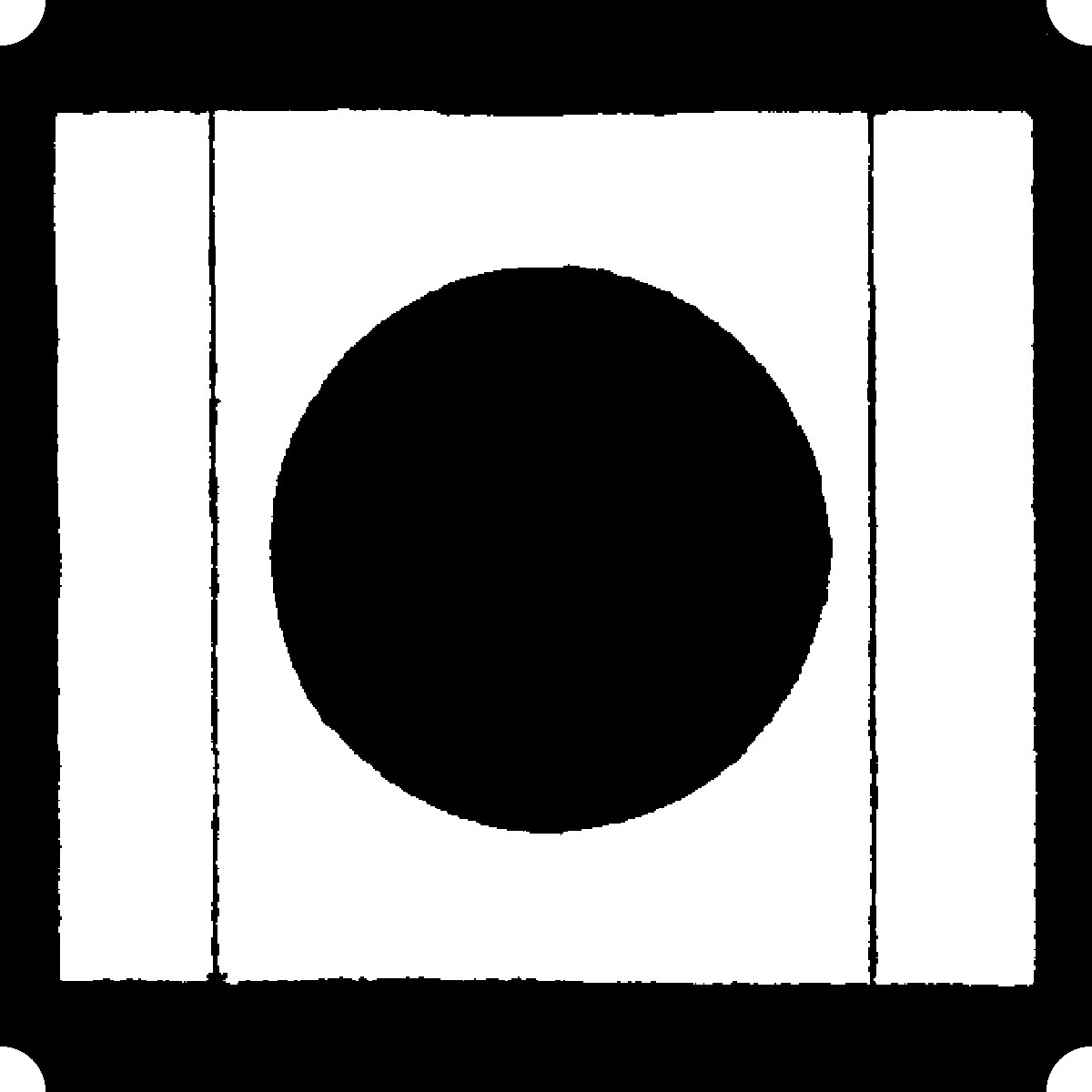

- Domain: Kameda
- Stipend: 20,000 koku
- Class: Tozama 5
- Headquarters: Kameda Castle
Daimyo family descended from the Taira.
Succession
- Yoshitaka
- Nobutaka
- Shigetaka
- Hidetaka
- Takatsugu
- Takayoshi
- Takanori
- Takayoshi
- Takanaga
- Takanobu (unranked)
- Takamasa
- Takakuni
- Tadaaki
Notable Ancestors
-
Iwaki
Tsunetaka (1566-1590)
Inherited the Iwakidaira fief (Mutsu), which had been in the possession of
his ancestors for several centuries. Having been defeated by Date Masamune in
1585, and by Satake Yoshishige in 1587, he submitted to Hideyoshi.
-
Iwaki
Sadataka (1584-1621)
Son of Satake Yoshishige, was adopted by Tsunetaka and succeeded him.
Having joined the party hostile to Ieyasu, together with his brother Satake
Yoshinobu and Uesugi Kagekatsu, he lost his fief of Iwakidaira (180,000 koku),
and in 1602 was transferred to Kameda, where his descendants resided.
Sources
Tozawa
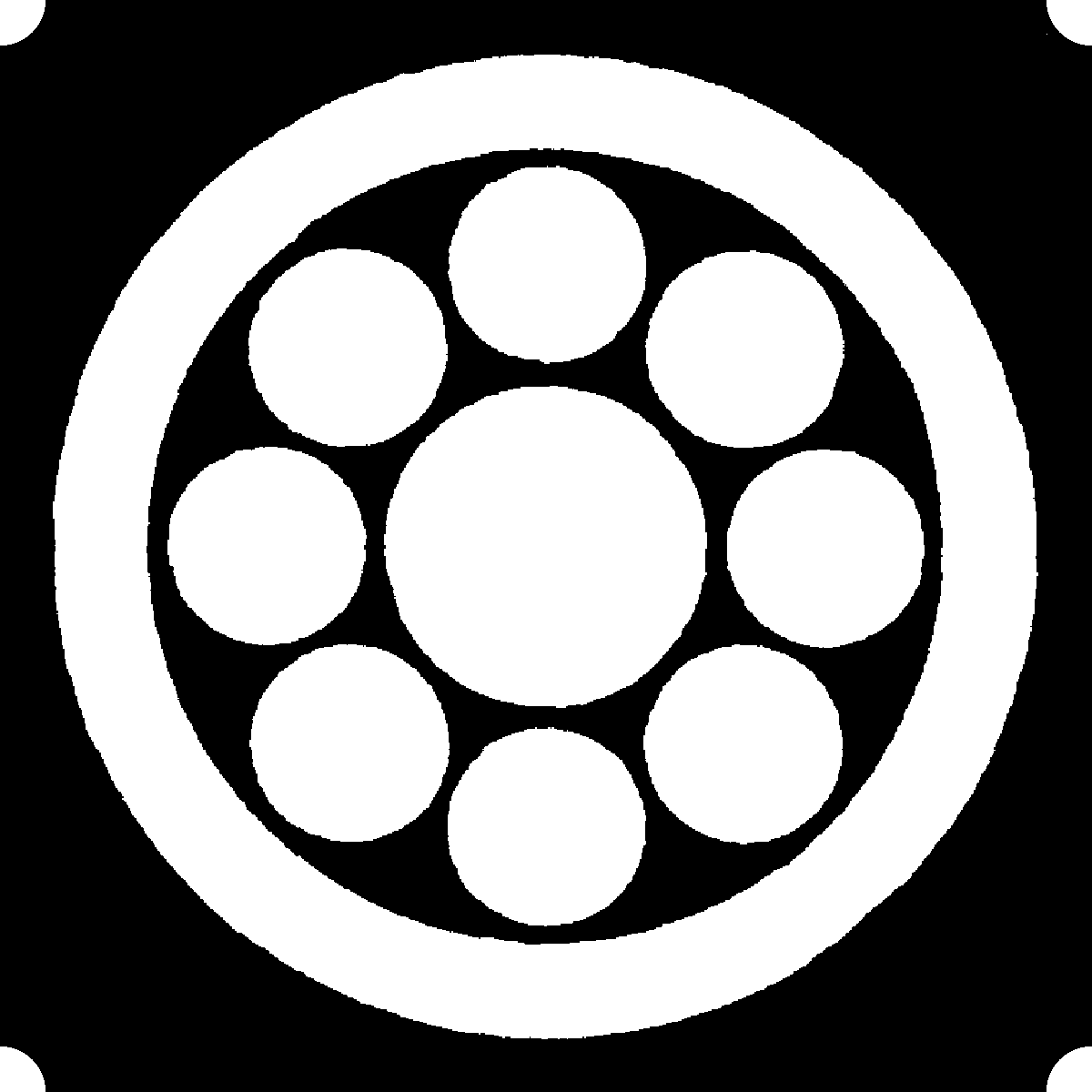

- Domain: Shinjo
- Stipend: 68,000 koku
- Class: Tozama 5 (Fudai status)
- Headquarters: Shinjo Castle
Daimyo family descended from Taira Tadamasa.
Succession
- Moriyasu (1566-1590)
- Masamori (1585-1648) - 1st Tozawa daimyo of Shinjo
- Masanobu
- Masatsune
- Masakatsu
- Masanobu
- Masatada
- Masasuke
- Masachika
- Masatane
- Masayoshi
- Masazane
Notable Ancestors
-
Tozawa
Moriyasu (1566-1590)
Was, like his ancestors, a vassal of the Nanbu family and castellan of Kakunotate Castle (Dewa).
-
Tozawa
Masamori (1585-1648)
Son of Moriyasu, sided with Ieyasu, received two districts of Hitachi in
fief and resided at Mastuoka (40,000 koku). In 1622, he was transferred to
Shinjo, where his descendants remained.
Sources
Sakai
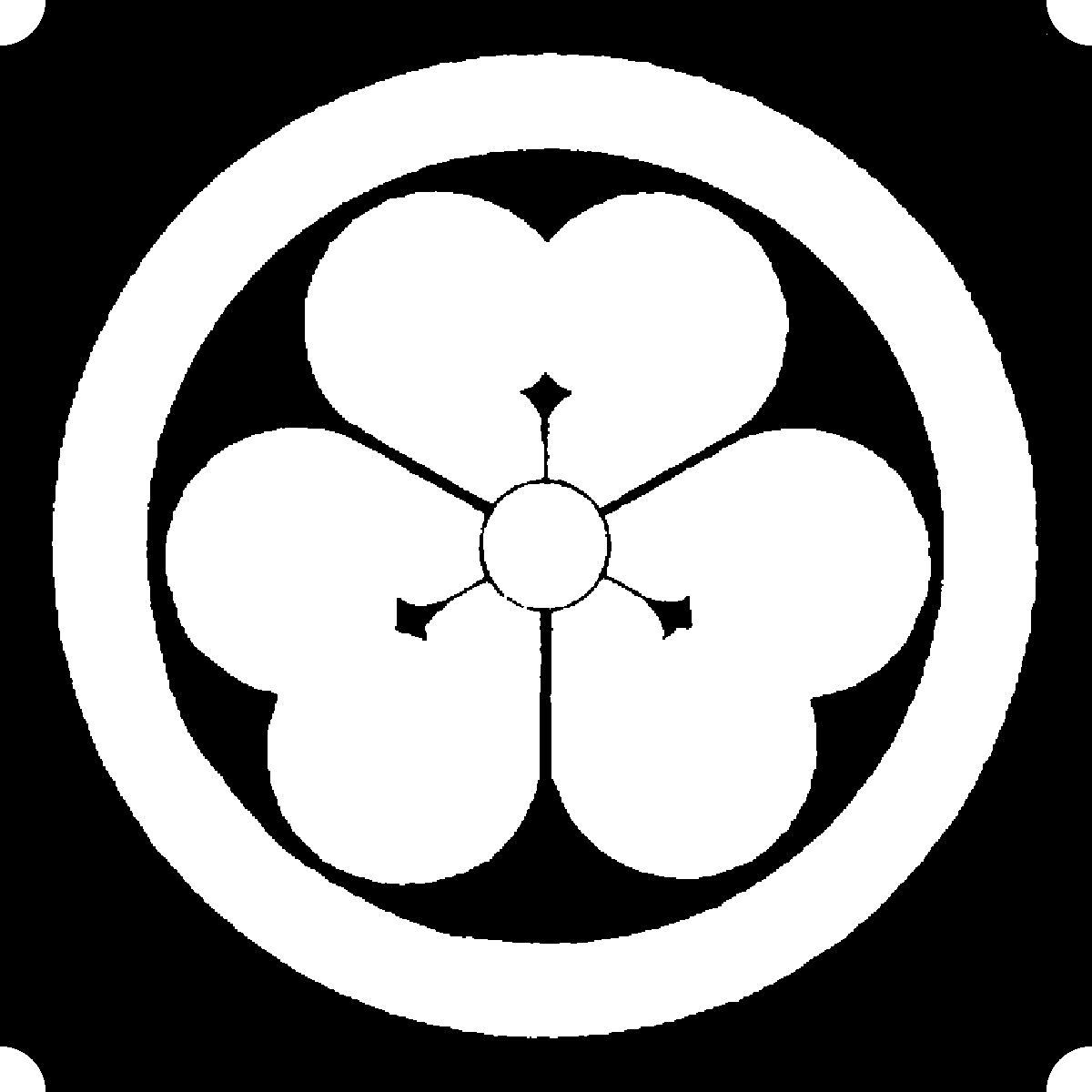

- Domain: Tsuruoka (Shonai)
- Stipend: 170,000 koku
- Class: Fudai 4
- Headquarters: Tsuruoka Castle
Daimyo family coming from Mikawa and descended from Minamoto Arichika.
Arichika had two sons; one, Yasuchika, took the name of Matsudaira; the other,
Chikauji, that of Sakai, and is the ancestor of the family of that name.
Hirochika, son of Chikauji, also had two sons who were the head of the two
principal branches of the family.
Senior branch.
Succession
- Chikauji
- Hirochika
- Ujitada
- Tadakatsu
- Yasutada
- Tadahisa
- Tadatsugu (1527-1596)
- Ietsugu (1564-1619) - Daimyo of Takasaki (Kozuke -- 50,000
koku); 1st Sakai daimyo of Takada (Echigo -- 100,000 koku)
- Tadakatsu (1594-1647) - 2nd Sakai daimyo of Takada; daimyo of Matsushiro (Shinano -- 100,000 koku); 1st Sakai daimyo of
Tsuruoka (1622-1634)
- Tadamasa
- Tadayoshi
- Tadazane
- Tadayori
- Tadaatsu
- Tadaari
- Tadakata
- Tadaaki
- Tadatomo
- Tadazumi
- Tadamichi
Notable Ancestors
-
Sakai
Tadatsugu (1527-1596)
Served Ieyasu, had charge of the castle of Yoshida (Mikawa), and in 1584
defeated and killed Ikeda Nobuteru at Nagakute.
-
Sakai
Ietsugu (1564-1619)
In 1578, he succeeded his father in the possession of the castle of Yoshida
(Mikawa). In 1590, when Ieyasu had been transferred to Kanto, he gave Ietsugu a
revenue of 30,000 koku at Usui (Kozuke); in 1604 Ietsugu took up his residence
at Takasaki (Kozuke -- 50,000 koku); then in 1616 at Takata (Echigo --
100,000 koku).
Later on the family resided: in 1619 at Matsushiro (Shinano); then from
1622 at Tsuruoka.
Related Branches
- Branch: Matsuyama (Dewa -- 20,000 koku)
- Branch: Himeji (Harima -- 150,000 koku)
- Branch: Isezaki (Kozuke -- 20,000 koku)
- Branch: Katsuyama (Awa -- 12,000 koku)
- Branch: Obama (Wakasa -- 103,500 koku)
- Branch: Tsuruga (Echizen -- 10,000 koku)
Sources
Sakai
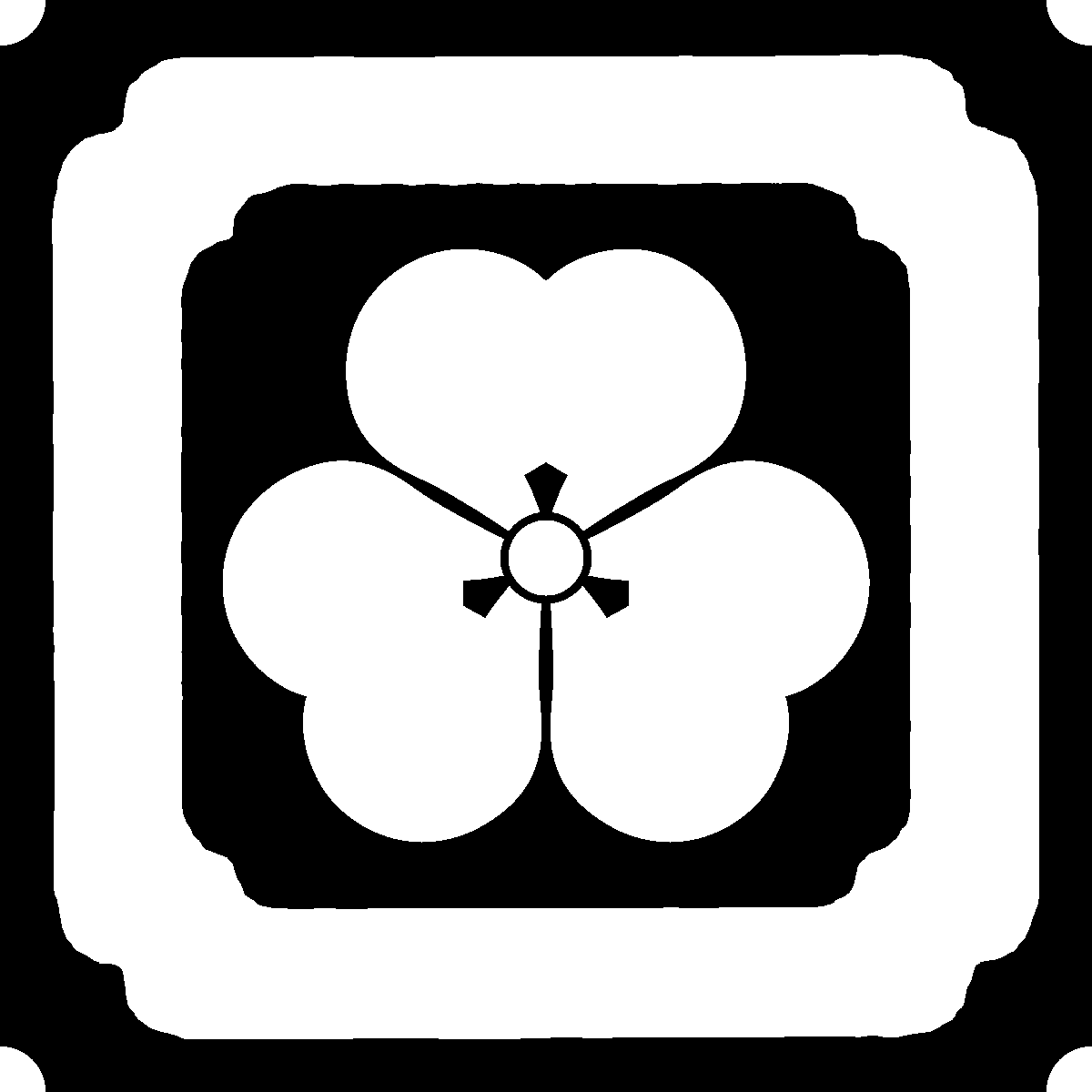

- Domain: Matsuyama (Matsumine)
- Stipend: 20,000 koku
- Class: Fudai 5
- Headquarters: Matsuyama Castle
Daimyo family coming from Mikawa and descended from Minamoto Arichika.
Arichika had two sons; one, Yasuchika, took the name of Matsudaira; the other,
Chikauji, that of Sakai, and is the ancestor of the family of that name.
Hirochika, son of Chikauji, also had two sons who were the head of the two
principal branches of the family.
Branch issued from the Sakai of Tsuruoka (Dewa) which settled at
Matsumine in 1647, built a castle there in 1779 and remained in it.
Succession
- Chikauji
- Hirochika
- Ujitada
- Tadakatsu
- Yasutada
- Tadahisa
- Tadatsugu (1527-1596)
- Ietsugu (1564-1619) - 1st Sakai daimyo of Takasaki (Kozuke -- 50,000
koku); 1st Sakai daimyo of Takada (Echigo -- 100,000 koku)
- Tadakatsu (1594-1647, daimyo 1622-1634) - 2nd Sakai daimyo of Takada; 1st
Sakai daimyo of Matsushiro (Shinano -- 100,000 koku); 1st Sakai daimyo of
Tsuruoka
- Tadatsune - 1st Sakai daimyo of Matsumine
- Tadayasu
- Tadayoshi
- Tadataka
- Tadanori
- Tadamichi
- Tadayoshi
- Tadamasa
Notable Ancestors
-
Sakai
Tadatsugu (1527-1596)
Served Ieyasu, had charge of the castle of Yoshida (Mikawa), and in 1584
defeated and killed Ikeda Nobuteru at Nagakute.
-
Sakai
Ietsugu (1564-1619)
In 1578, he succeeded his father in the possession of the castle of Yoshida
(Mikawa). In 1590, when Ieyasu had been transferred to Kanto, he gave Ietsugu a
revenue of 30,000 koku at Usui (Kozuke); in 1604 Ietsugu took up his residence
at Takasaki (Kozuke -- 50,000 koku); then in 1616 at Takata (Echigo --
100,000 koku).
Later on the family resided: in 1619 at Matsushiro (Shinano); then from
1622 at Tsuruoka.
Related Branches
- Senior branch: Tsuruoka (Dewa -- 170,000 koku)
- Branch: Himeji (Harima -- 150,000 koku)
- Branch: Isezaki (Kozuke -- 20,000 koku)
- Branch: Katsuyama (Awa -- 12,000 koku)
- Branch: Obama (Wakasa -- 103,500 koku)
- Branch: Tsuruga (Echizen -- 10,000 koku)
Sources
Rokugo
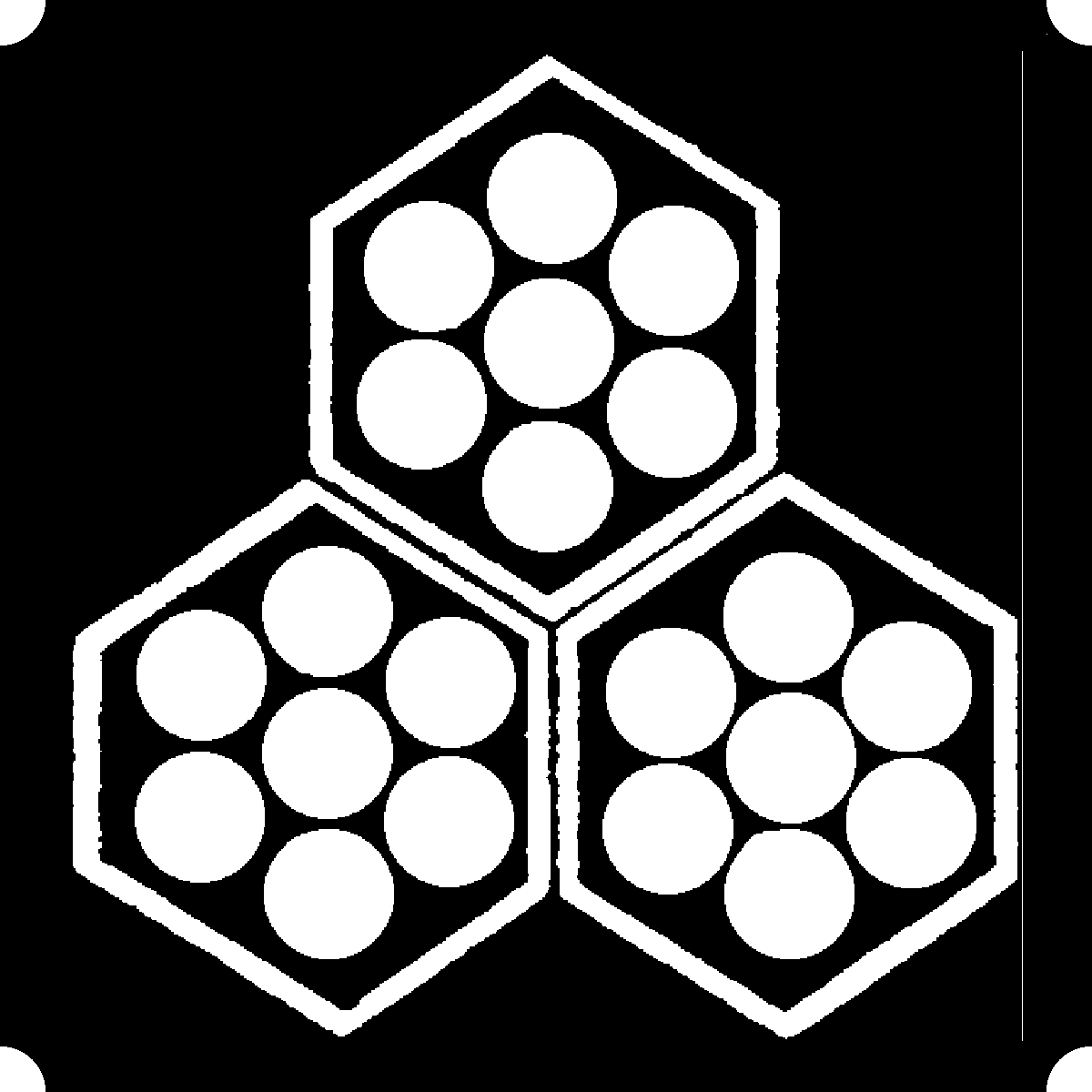

- Domain: Honjo
- Stipend: 20,000 koku
- Class: Tozama 5
- Headquarters: Honjo Castle
Family of daimyo descended from the Fujiwara.
Succession
- Michiyuki
- Masanori (1567-1634) - Daimyo of Fuchu (10,000 koku); 1st
Rokugo daimyo of Honjo
- Masakatsu
- Masanobu
- Masaharu
- Masanaga
- Masashige
- Masachika
- Masazumi
- Masatsune
- Masatada
- Masakane
Notable Ancestors
-
Rokugo
Masanori (1567-1634)
Son of Michiyuki, was first, like his ancestors, a vassal of the Onodera of
Dewa and possessor of the domain of Rokugo. In 1588, he served in the campaign
of his suzerain Onodera Yoshimichi against Akita Sanesue and was defeated.
After the fall of the Onodera, he served Hideyoshi, then Ieyasu, who in 1602
raised him to the rank of daimyo and gave him the fief of Fuchu (Hitachi --
10,000 koku). In 1623, he was transferred to Honjo (Dewa -- 20,000 koku).
Sources
Yonezu
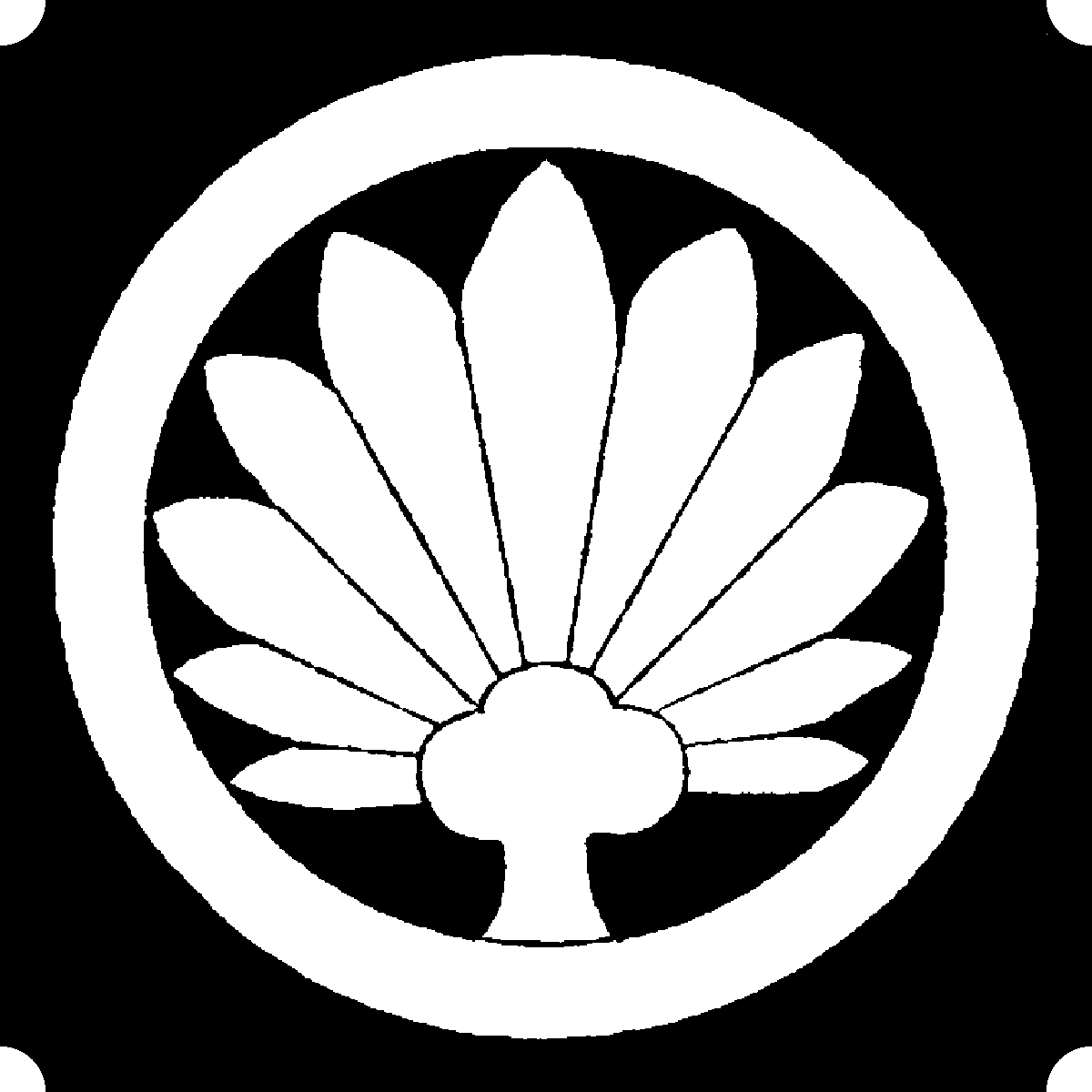

- Domain: Nagatoro
- Stipend: 11,000 koku
- Class: Fudai 5
- Headquarters: Municipal office
Daimyo family descended from Minamoto Yorimitsu (Seiwa-Genji). Made noble
in 1601, from 1698 it resided at Nagatoro.
Succession
- Masatake - 1st Yonezu daimyo of Kuki (11,000 koku)
- Masanori
- Masayoshi
- Masataka
- Michimasa - 5th Yonezu daimyo of Kuki; 1st Yonezu daimyo of Nagatoro
- Masayoshi
- Masayasu
- Masaaki
- Masatoshi
Sources
Oda
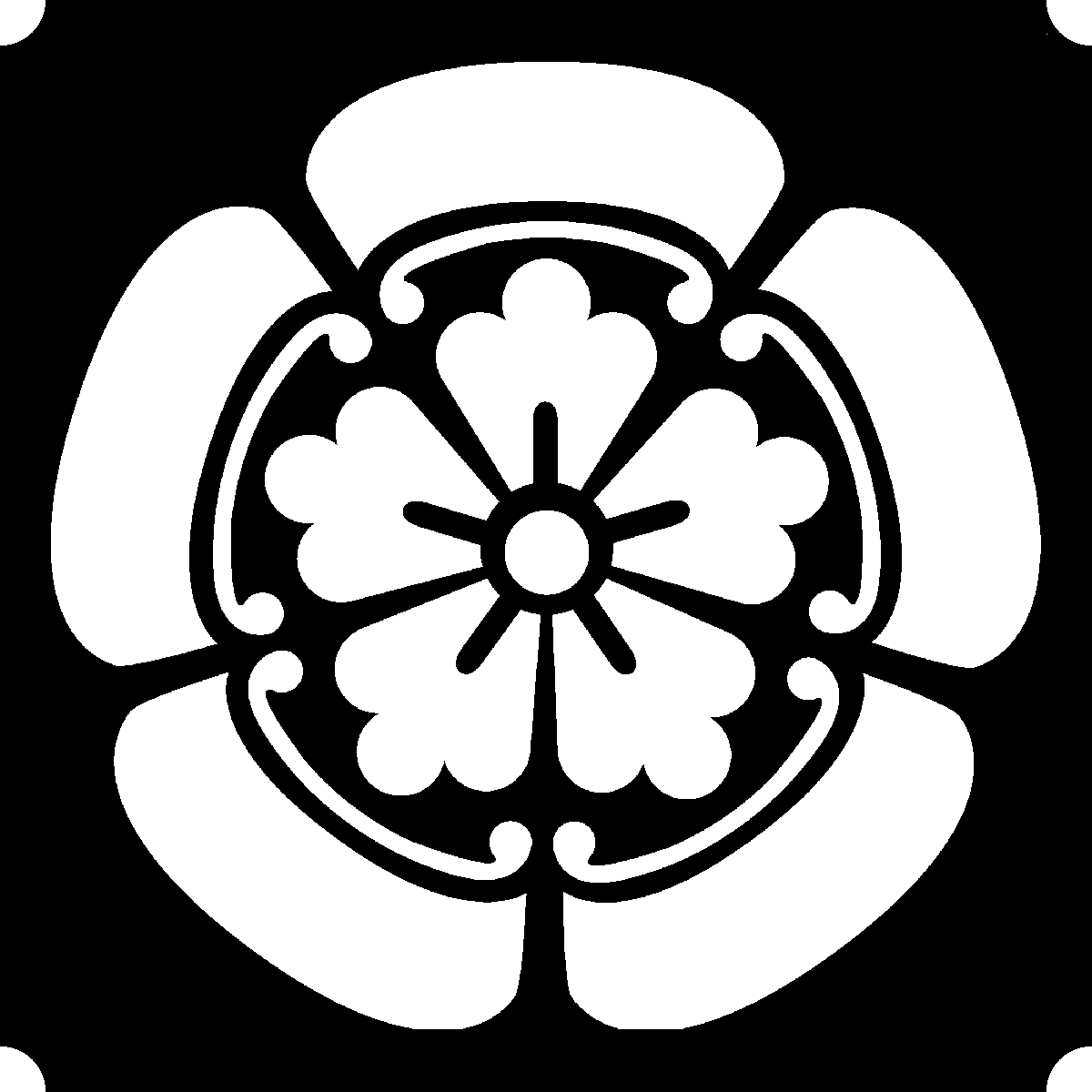

- Domain: Tendo (Takahata)
- Stipend: 20,000 koku
- Class: Tozama 5
- Headquarters: Tendo Castle
Family of daimyo originating in Owari, and descended from Taira Sukemori,
son of Shigemori.
Branch of Nobuyoshi, 3rd son of Nobuo; they fixed their residence
successively: in 1615 at Obata (Kozuke); in 1767 at Takabatake (Dewa); and from
1828 at
Tendo.
Succession
- Taira Kiyomori (1118-1181)
- Taira Shigemori (1138-1179)
- Taira Sukemori
- Chikazane
- ...
- Nobuhide (1510�1551)
- Nobunaga (1534-1582)
- Nobukatsu/Nobuo (1558-1630)
- Nobuyoshi - 1st Oda daimyo of Obata (Kozuke -- 20,000 koku)
- Nobumasa
- Nobuhisa
- Nobunari
- Nobusuke
- Nobutomi
- Nobukuni - 7th Oda daimyo of Obata; 1st Oda daimyo of Tendo
- Nobuchika
- Nobukazu (1793-1836; daimyo 1830-1836)
- Nobumichi (daimyo 1836-1868)
- Nobutoshi (1853-1901; daimyo 1868-1868)
- Suemaru (1866-1871; daimyo 1868-1869, unranked)
- Nobutoshi (1853-1901; daimyo 1869- , second tenure)
Notable Ancestors
Son of Sukemori, established himself at Oda (Echizen) and took its name.
His descendants, vassals of the Shiba family, followed the latter to Owari,
and in 1435 received the castle of Inuyama.
Descendant of Chikazane in the 17th generation, witnessed the ruin of his
suzerains, the Shiba lords, and occupied half of Owari province. He fought
against the Saito, and in 1542 defeated Imagawa Yoshimoto at Azuki-zaka
(Mikawa).
%20797x600.jpg)
.jpg)
.jpg)
.jpg)
2nd son of Nobuhide, was 15-years-old when his father died. Expert in all
kinds of warlike exercises, he gave but little heed to the government of his
domains. In vain, one of his best retainers, Hirade Kiyohide, endeavored to
draw his attention to that point; his remonstrances remained without effect.
Thereupon the faithful servant committed his representations to writing, had
them carried to his lord, and then put an end to his life. Nobunaga, moved by
such devotedness, changed his conduct for the better.
In 1557, his younger
brother, Nobuyuki, having treated with the Hayashi, who had invaded a part of
Owari, Nobunaga sent against him Ikeda Nobuteru, who defeated him and put him
to death.
Three years afterwards, in 1560, Imagawa Yoshimoto, daimyo of Suruga
and of Totomi, entered Owari at the head of a numerous army. All the retainers
of Nobunaga advised him to make overtures with the enemy rather than engage in
an unequal contest; but he rejected their timorous counsels, marched against
his powerful adversary and defeated him completely at Okehazama (Owari).
Yoshimoto fled, but he was pursued by Hattori Koheida and Mori Hidetaka and
put to death. The provinces of Suruga and Totomi, escheated to Nobunaga, whose
reputation began to spread far and wide.
In 1562, the emperor Ogimachi sent Tachiiri
Munetsugu secretly to him and commissioned him to put an end to the troubles
so long desolating the capital. Nobunaga accepted the mission, and in
1564 he entered Mino, defeated Saito Tatsuoki and established himself at Gifu.
Before penetrating into Omi, he secured his family ties, the co-operation of
Asai Nagamasa, Takeda Shingen, and Tokugawa Ieyasu. Another letter from the
emperor urged him to hasten the pacification of the land. Shortly after,
Ashikaga Yoshiaki asked his support to secure the succession of his brother,
the Shogen Yoshiteru. Nobunaga set to work. He captured 18 castles in Omi and
dispossessed the daimyo Sasaki Yoshikata. After this, he entered
Kyoto in 1568 with Yoshiaki, who received the title of Shogun. Again, breaking down
the Miyoshi, he pacified Settsu and Kawachi. Whereupon, Yoshiaki wished to
confer the title of Kanryo on him, but Nobunaga refused.
The next year, the
Miyoshi and their vassal, Matsunaga Hisahide, re-entered Kyoto and besieged
the Shogun in the Honkoku-ji. Nobunaga returned in haste to the capital and
defeated the assailants. Then he built the Nijo palace for Yoshiaki, repaired
the Imperial Palace, determined the revenues of the Court, etc.
After
that, he went to Ise in 1569 to fight against Kitabatake Tomonori,
defeated him, and gave him as son-in-law and heir, his 2nd son Nobuo. The next
year, he vanquished successively the Asakura (Echizen), the Asai (Omi), and
the Miyoshi (Settsu).
In 1571, the bonzes of Hiei-zan having sided against him,
he lead an army against them, seized their domains, set fire to their temples,
and put them all to the sword.
Meanwhile, Yoshiaki plotted with Takeda Shingen
to get rid of his formidable protector. But in 1573 Nobunaga returned to Kyoto, deposed the Shogun, and sent him as prisoner to the castle of Wakae
(Kawachi). Thus, after two centuries and a half, ended the Ashikaga Shogunate.
After this, Nobunaga completed the ruin of the Asakura, the Asai, the Miyoshi,
and the Sasaki, and from this time forward, these four families disappear from
history.
In the following year, Nobunaga was received in the Seiryoden by the
emperor, who offered him a cup and conferred on him the title of Gon-Dainagon.
Thereupon, he built a superb castle for himself on the shores of Lake Biwa at
Awachi (Omi); in 1576, quelled the turbulent bozes of Ikko-shu; in 1579,
besieged and defeated Araki Murashige in his castle of Itami (Settsu); and in
1582, with the help of Ieyasu, crushed the Takeda at Temmokuzan (Kai).
Meanwhile, Hashiba Hideyoshi was fighting with the Mori; he laid siege to the
castle of Takamatsu (Bitchu) and asked for aid. Nobunaga commissioned Akechi
Mitsuhide to bring him reinforcements, whilst he himself made preparations to
direct the campaign in person. Mitsuhide mustered 30,000 men; but instead of
leading them west, he entered Kyoto and suddenly invested the Honno-ji, where
Nobunaga had set up his residence. The latter hearing a tumult, went out to
see what was happening but in a few moments, he fell mortally wounded. It was
the 22nd of June 1582. Nobunaga was only 48 years old; he left 12 sons and 11
daughters. The emperor conferred on him the postumous name of Sogen-in, the
title of Dajo-daijin and the 2nd degree of the first rank (ju-ichi-i).
Nobunaga is one of the greatest figures in Japanese history. Bold and
persevering, he rose from the rank of a petty daimyo, to the highest honors of
the Empire. He put an end to the civil wars that had been ruining the country
for upwards of a century, and resolutely began the work of re-organization,
which the Tokugawa were to complete. He showed himself favorable to the
Europeans, and in the interest of his country, encouraged foreign trade. From
policy, if not from conviction, he supported the Catholic missionaries, who
owed much of their astonishing success to his protection. His aim was to break
down the barrier between Japan and other nations. His plan was delayed for
three centuries owing to the distrustful policy of the Tokugawa.
-
Oda
Nobukatsu (1558-1630)
2nd son of Nobunaga, was chosen to be the son-in-law of Kitabatake Tomonori
after the latter's defeat (1569). In 1575, Kitabatake ceded his domains and his title
of Ise-kokushu. After the death of Nobunaga, all his grand vassals
assembled at Kiyosu, elected Sanboshi, son of Nobutada, as his heir and
appointed as guardians his two uncles, Nobukatsu and Nobutaka. Nobukatsu was intrusted
with the administration of the provinces of Owari, Ise, and Iga, with a
revenue of 1,000,000 koku; he settled in Kiyosu and Nobutada in Gifu.
Contentions arose between the guardians who appealed to the daimyo to defend
their cause. Shibata Katsuie, Takigawa Kazumasu, Sasa Narimasa, Maeda Toshiie,
etc. sided with Nobutaka; Nobukatsu was supported by Hideyoshi, Niwa Nagahide,
Ikeda Nobuteru, etc. Hideyoshi then commissioned Nobukatsu to besiege his brother
in the castle of Gifu, whilst he would fight against Katsuie. After resisting
for a while, Nobutaka escaped from Gifu, but was slain in his flight (1583);
Katsuie, defeated at Shizu-ga-take, took his own life in his castle of Kita no
sho (Echizen). The following year, all the vassals repaired to Azuchi to offer
their young suzerain Sanboshi and his guardian their New Year's wishes.
Hideyoshi alone failed to appear, which greatly incensed Nobukatsu. He appealed to
Tokugawa Ieyasu, and both mustered troops. Hideyoshi did the same, but in the
very first engagement at Nagakute (Owari), his vanguard was completely
crushed. Meanwhile the bonzes of the Negoro temple (Kii), caused troubles in
the provinces. Hideyoshi perceiving himself in a critical position, had
recourse to diplomacy; he treated successively with his two adversaries and
made them fair promises; he thus avoided certain disaster (1584). During the
campaign against the Hojo of Odawara (1590), Nobukatsu came at the head of 15,000
men from the provinces of Ise and Owari. But again quarreling with Hideyoshi,
he was consigned to a small fief of 20,000 koku in Dewa, after which he shaved
his head and took the name of Joshin. Pardoned the following year, he returned
to Ise, and on the death of Hideyoshi (1598), settled in Fushimi. Having sided
against Ieyasu in 1600, he was dispossessed and retired to Osaka. When
Yodo-gimi attempted to enlist him in her projects against Ieyasu, Nobukatsu always
weak, declined, and returned to Kyoto. After Hideyori's downfall in 1615, he
received from Ieyasu a revenue of 50,000 koku in Yamato, and died at the age
of 73
Nobukatsu had been baptized in 1588, but is hard to say whether he persevered
to the end in the practice of his religion.
Related Branches
- Branch of Takanaga: Kaibara (Tanba -- 20,000 koku)
- Branch of Nagamasa: Shibamura (Yamato -- 10,000 koku)
- Branch of Hisanaga: Yanagimoto (Yamato -- 10,000 koku)
Sources
|
